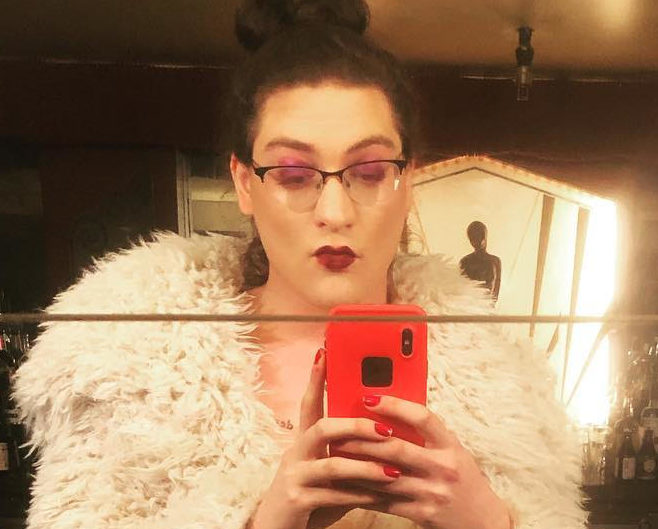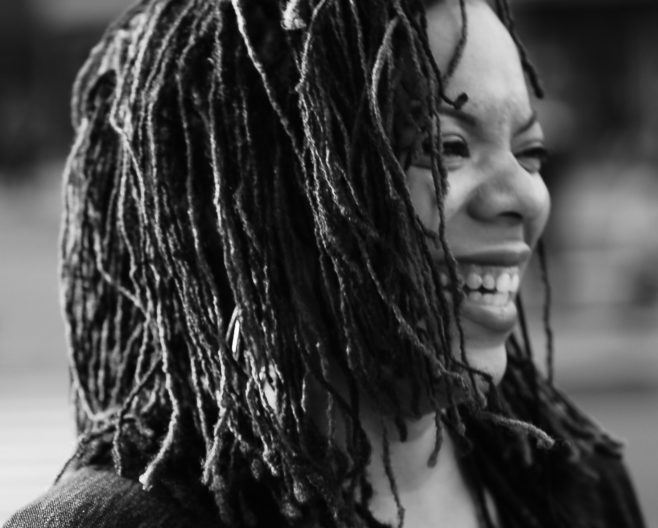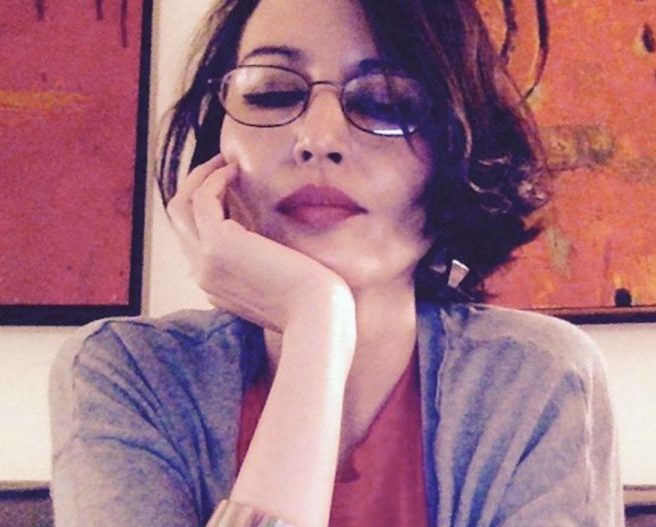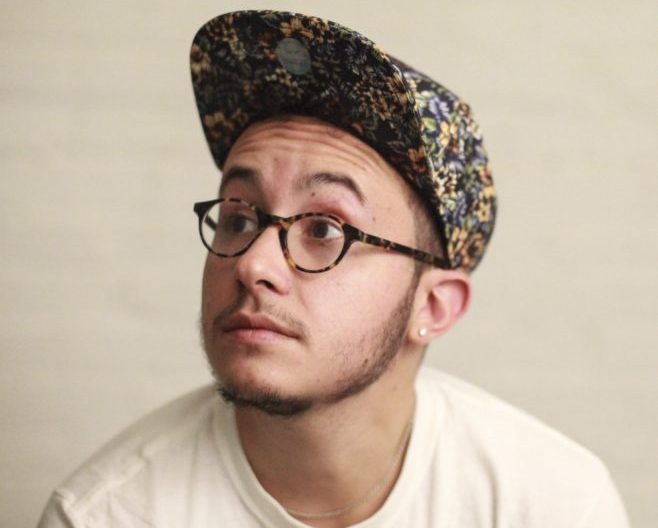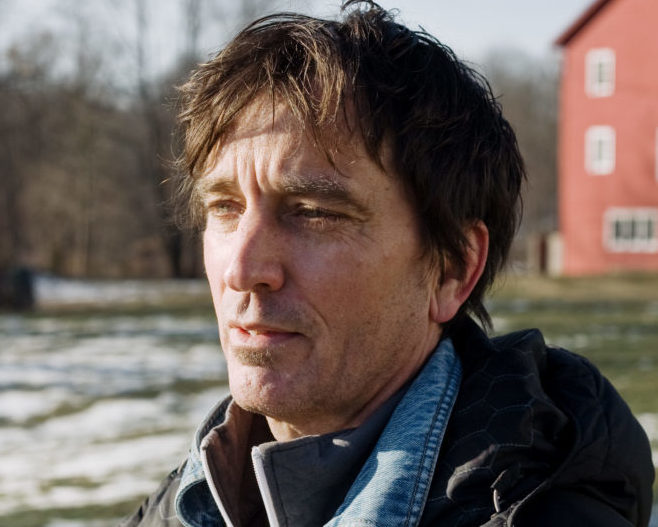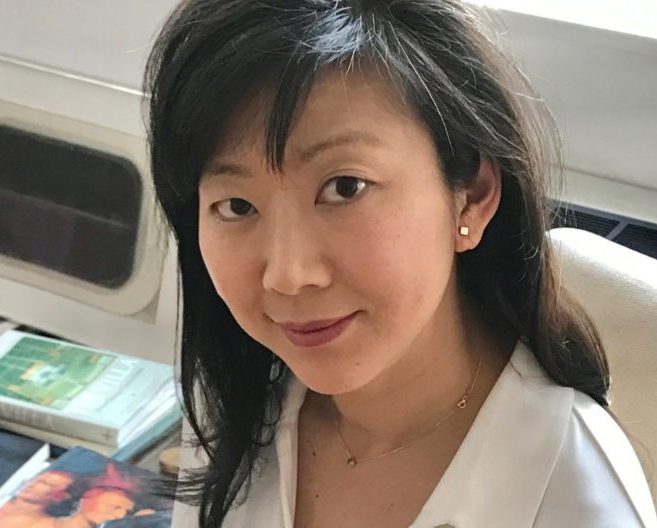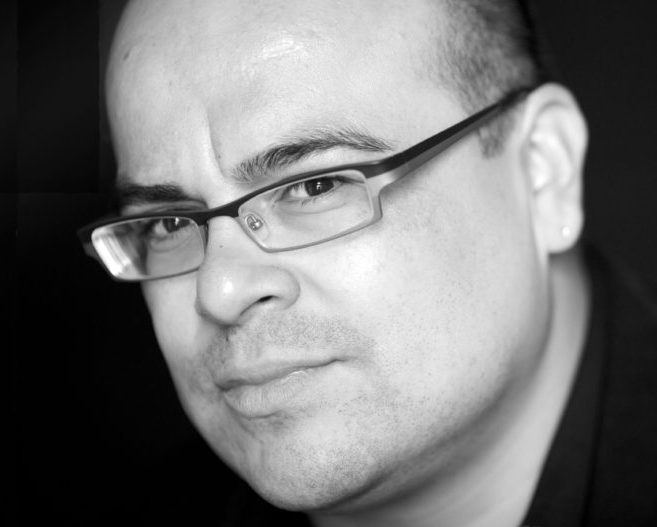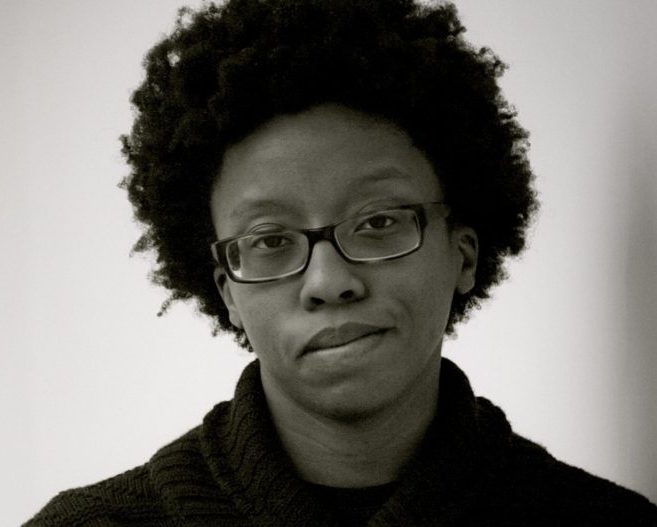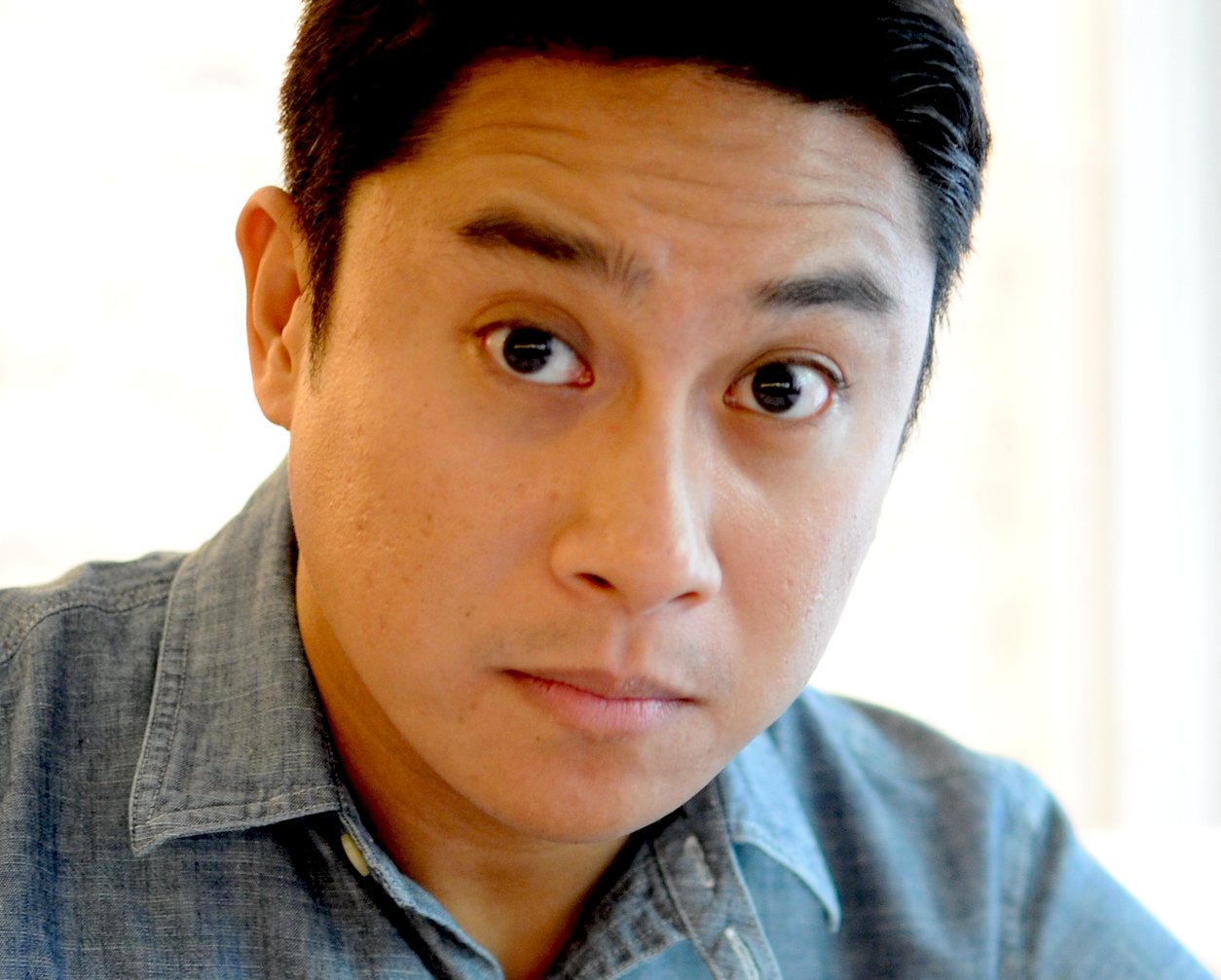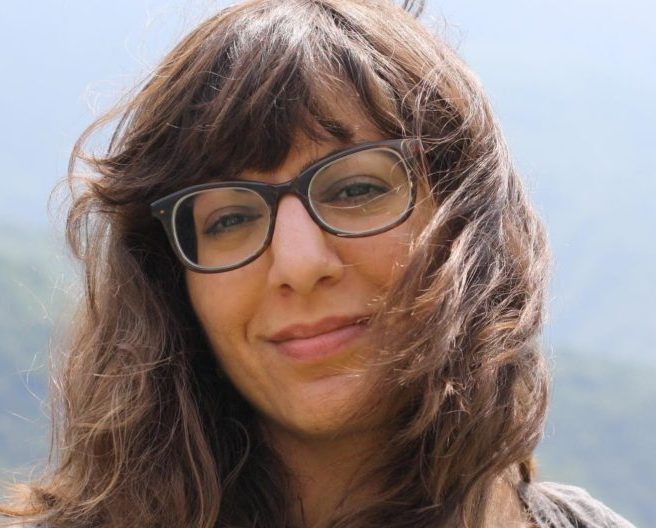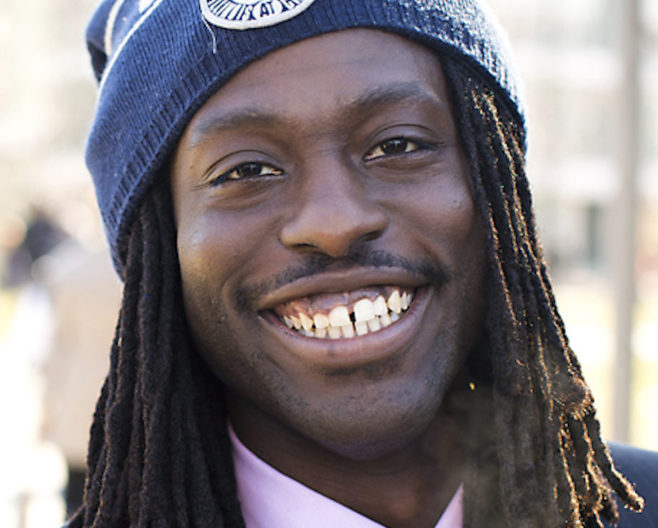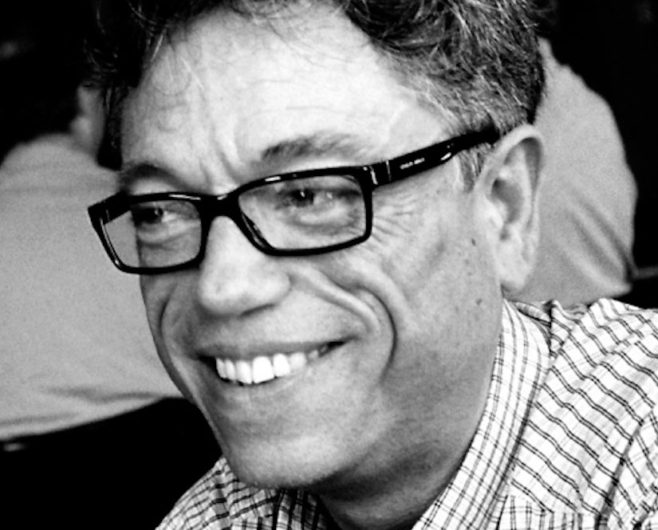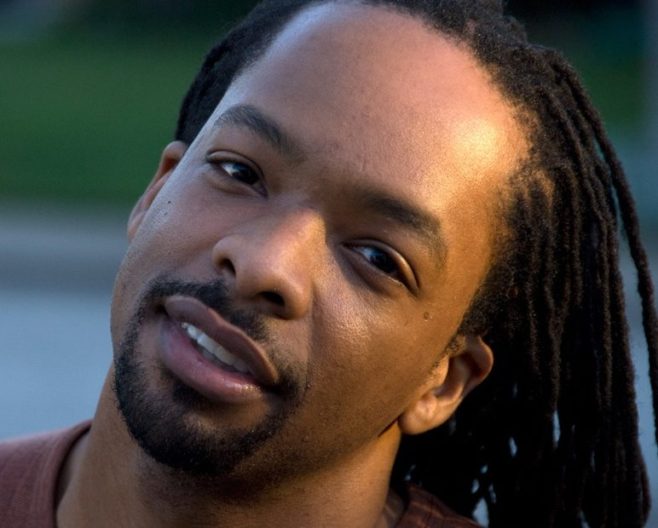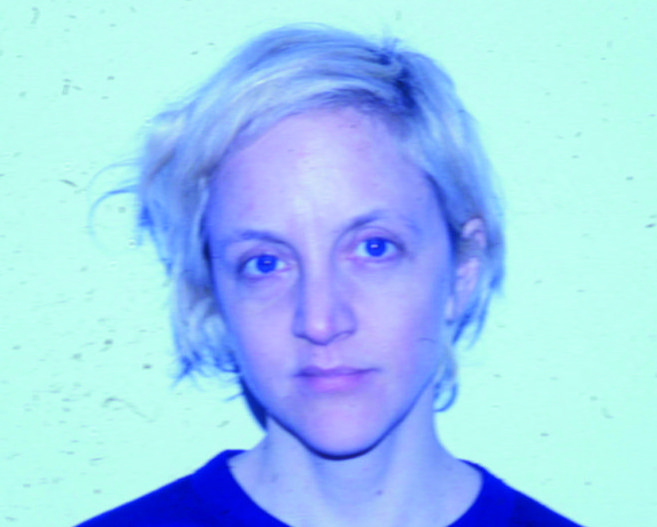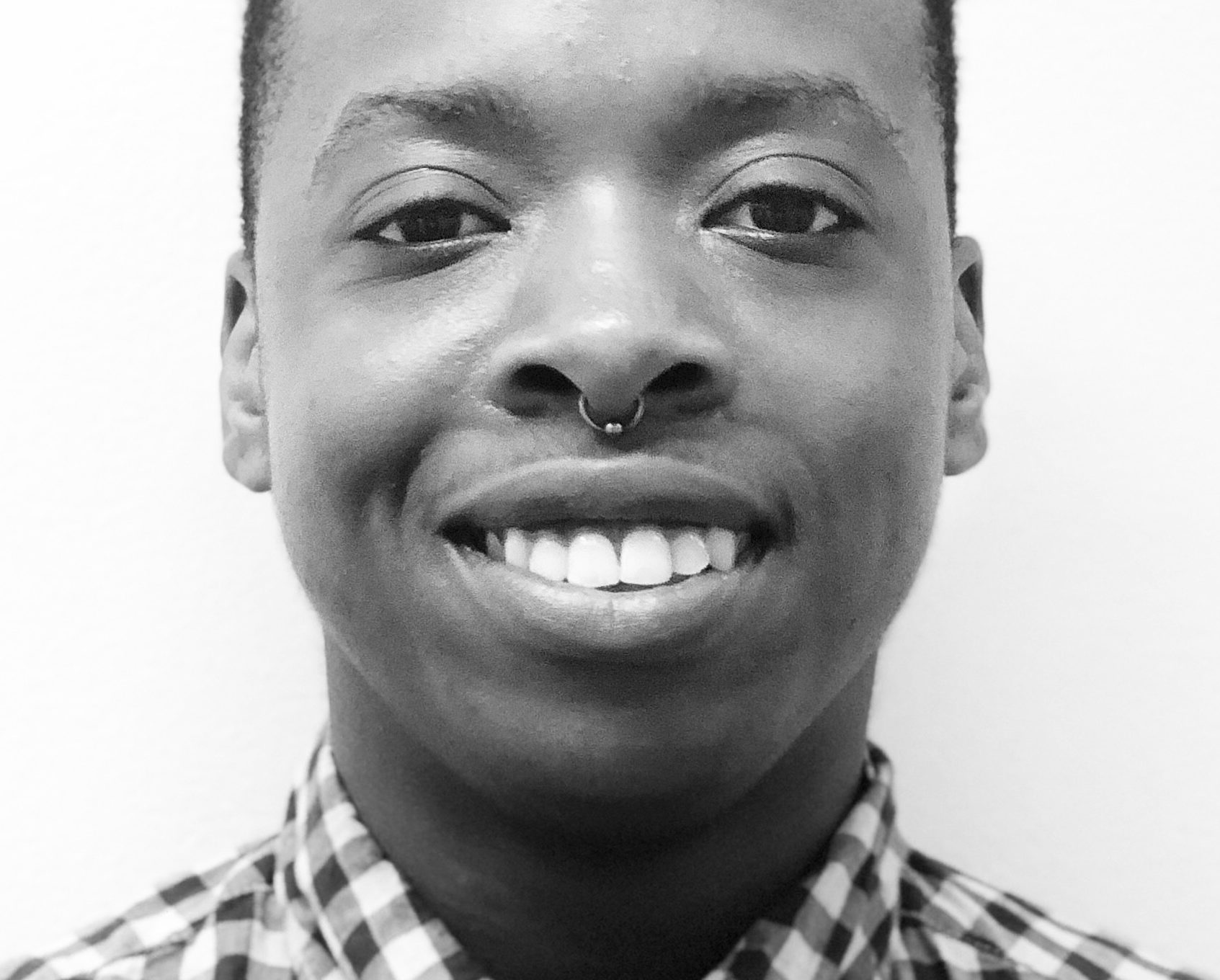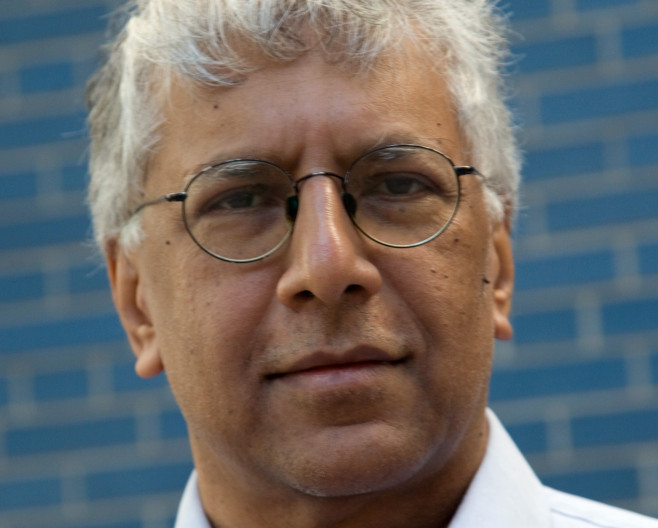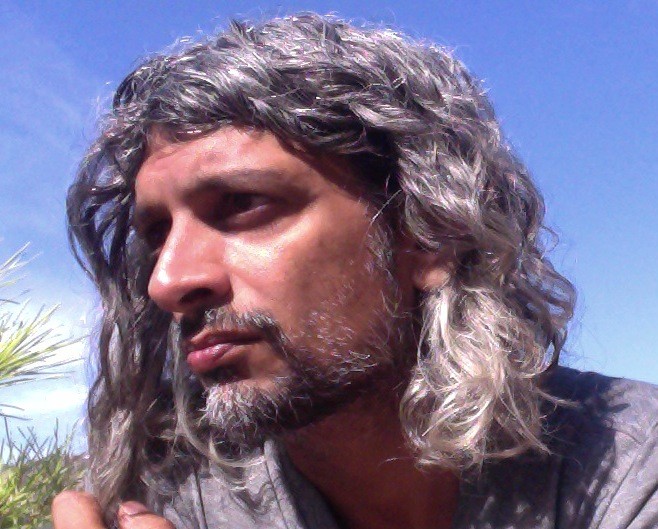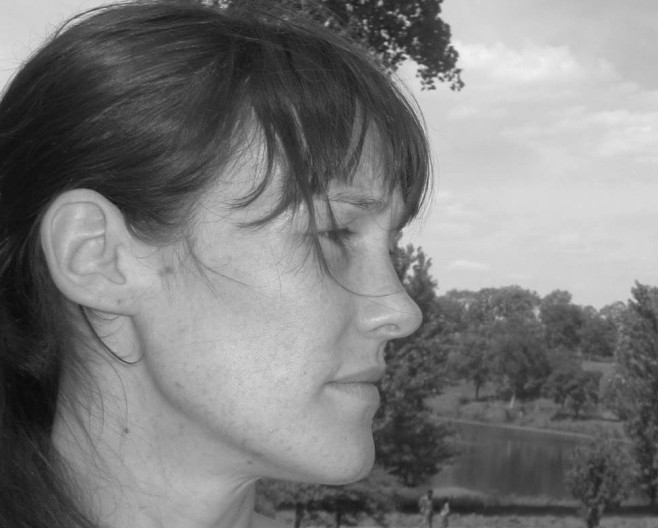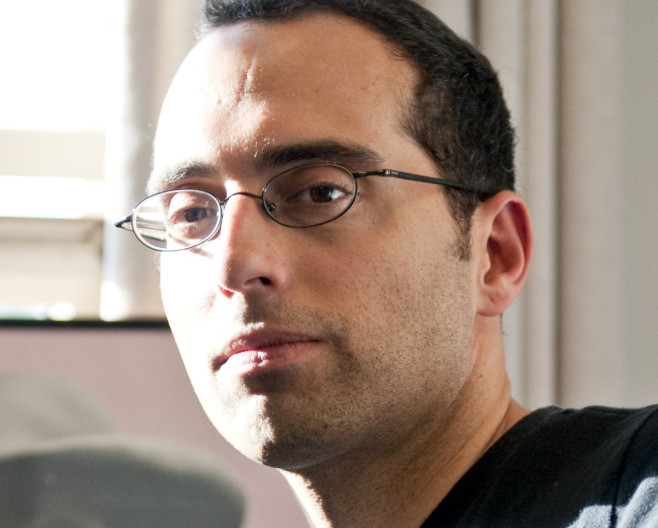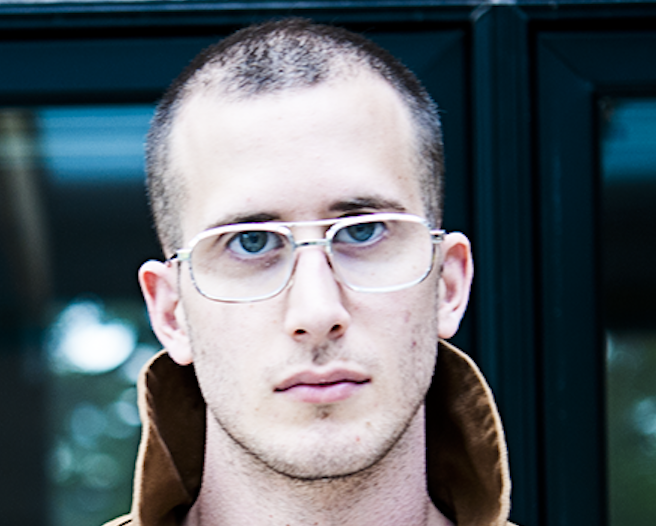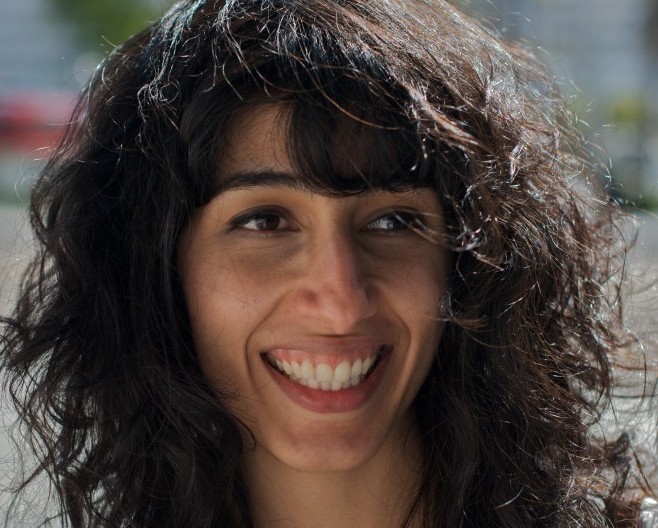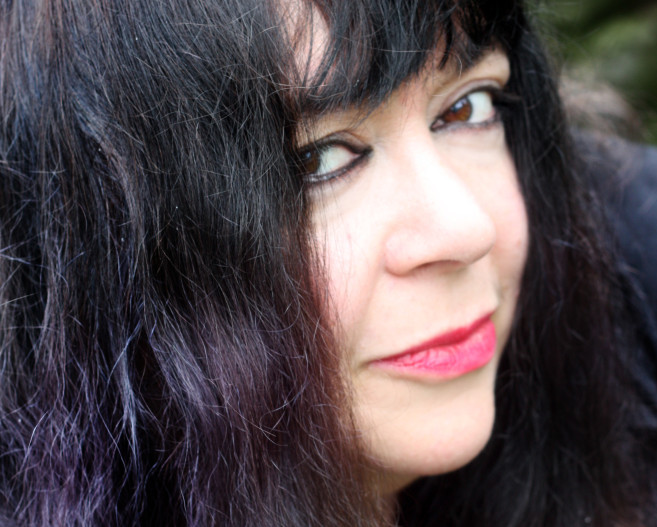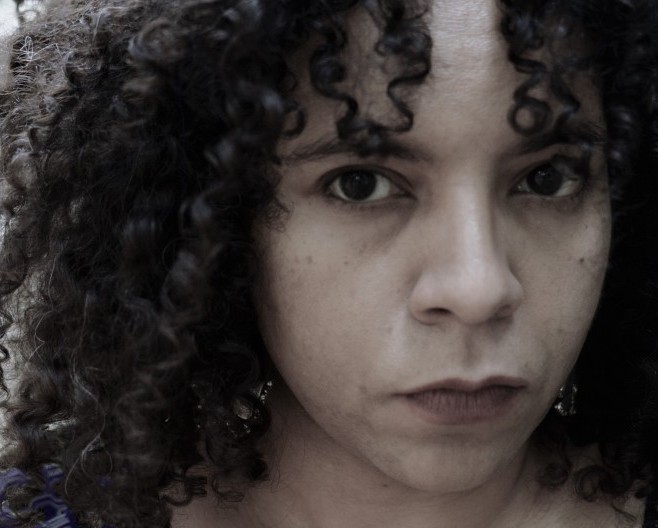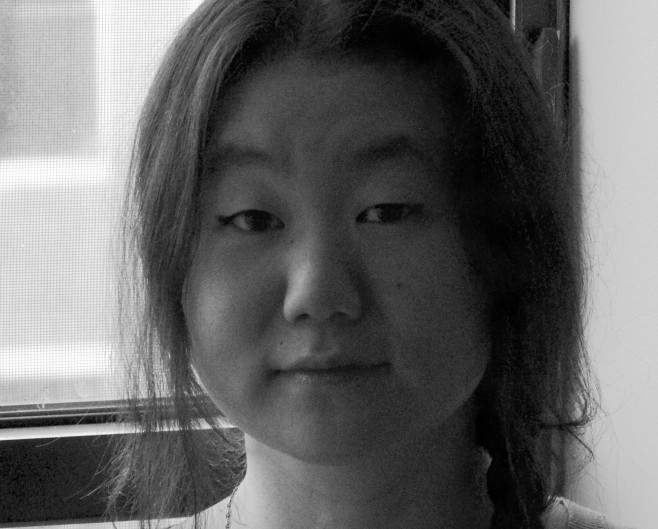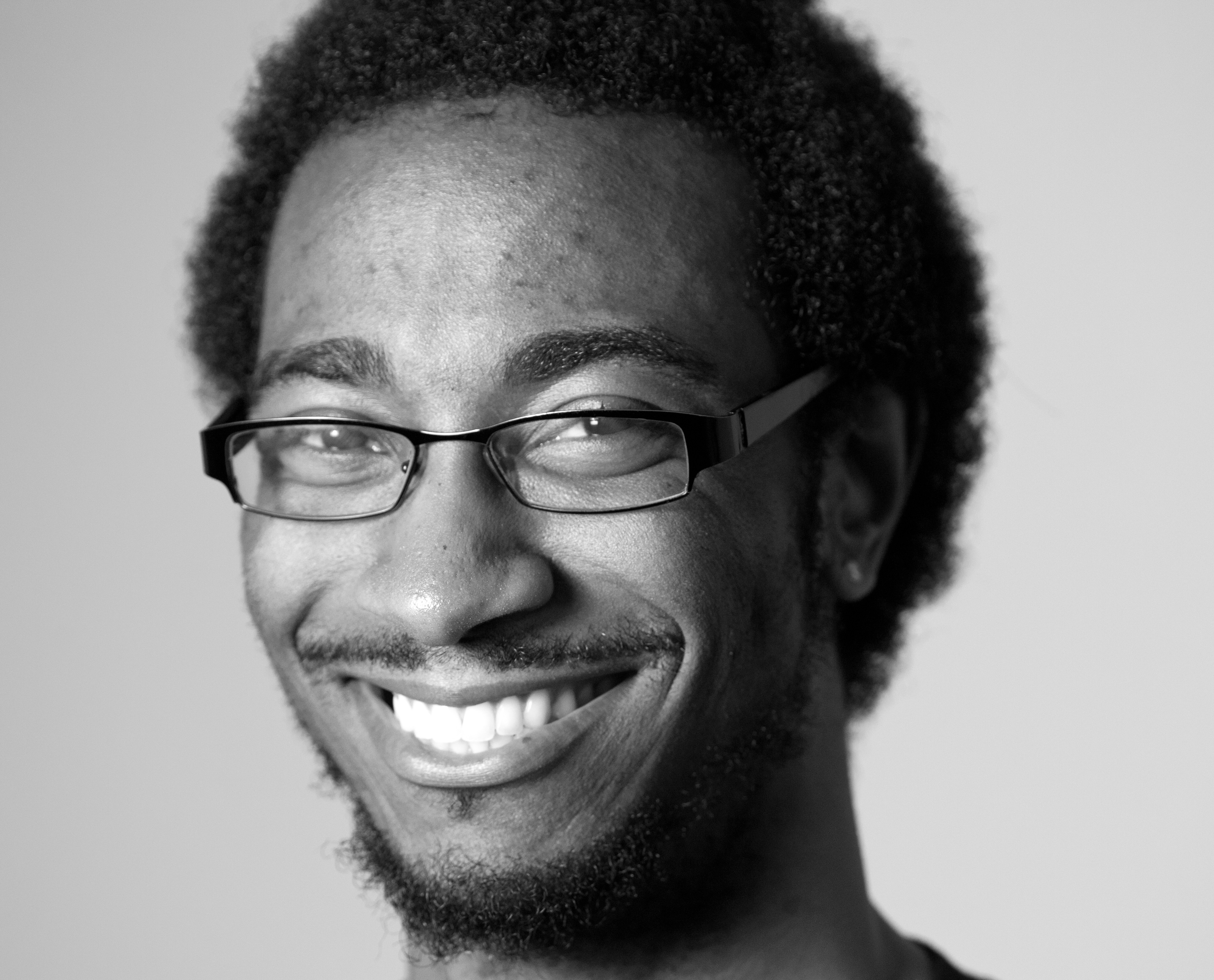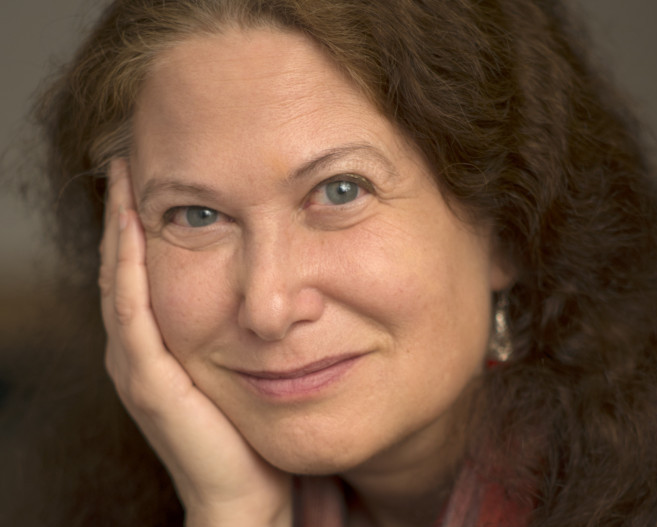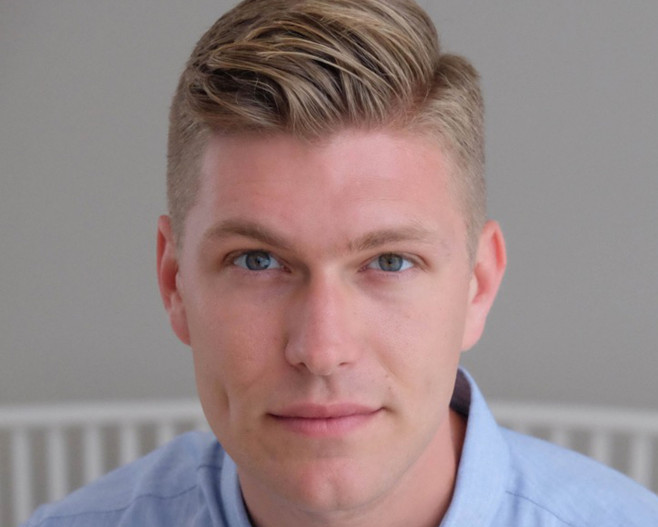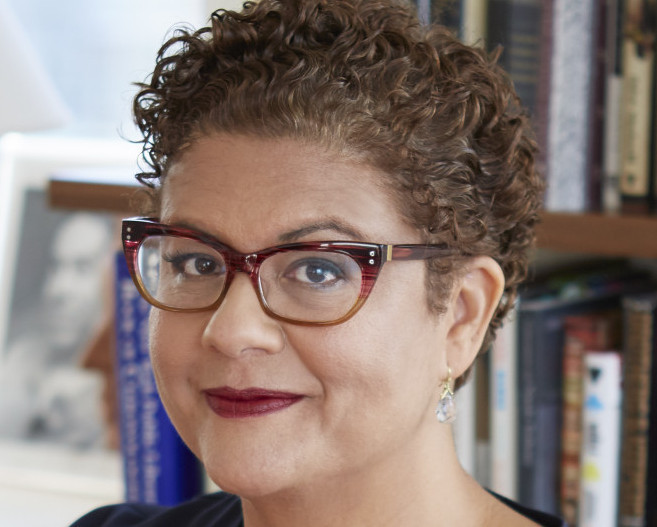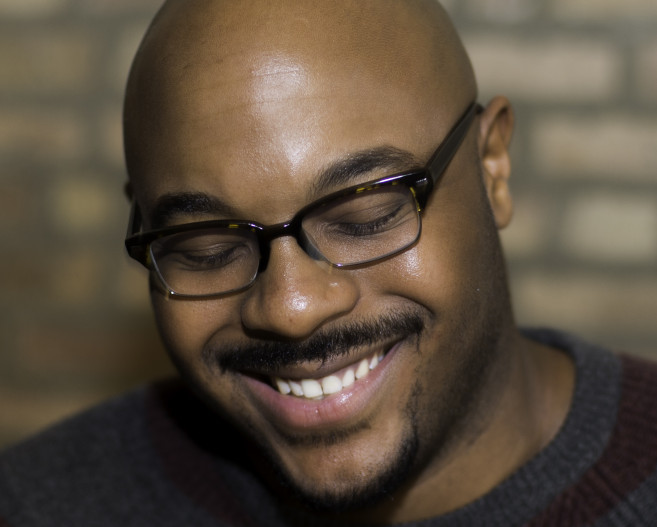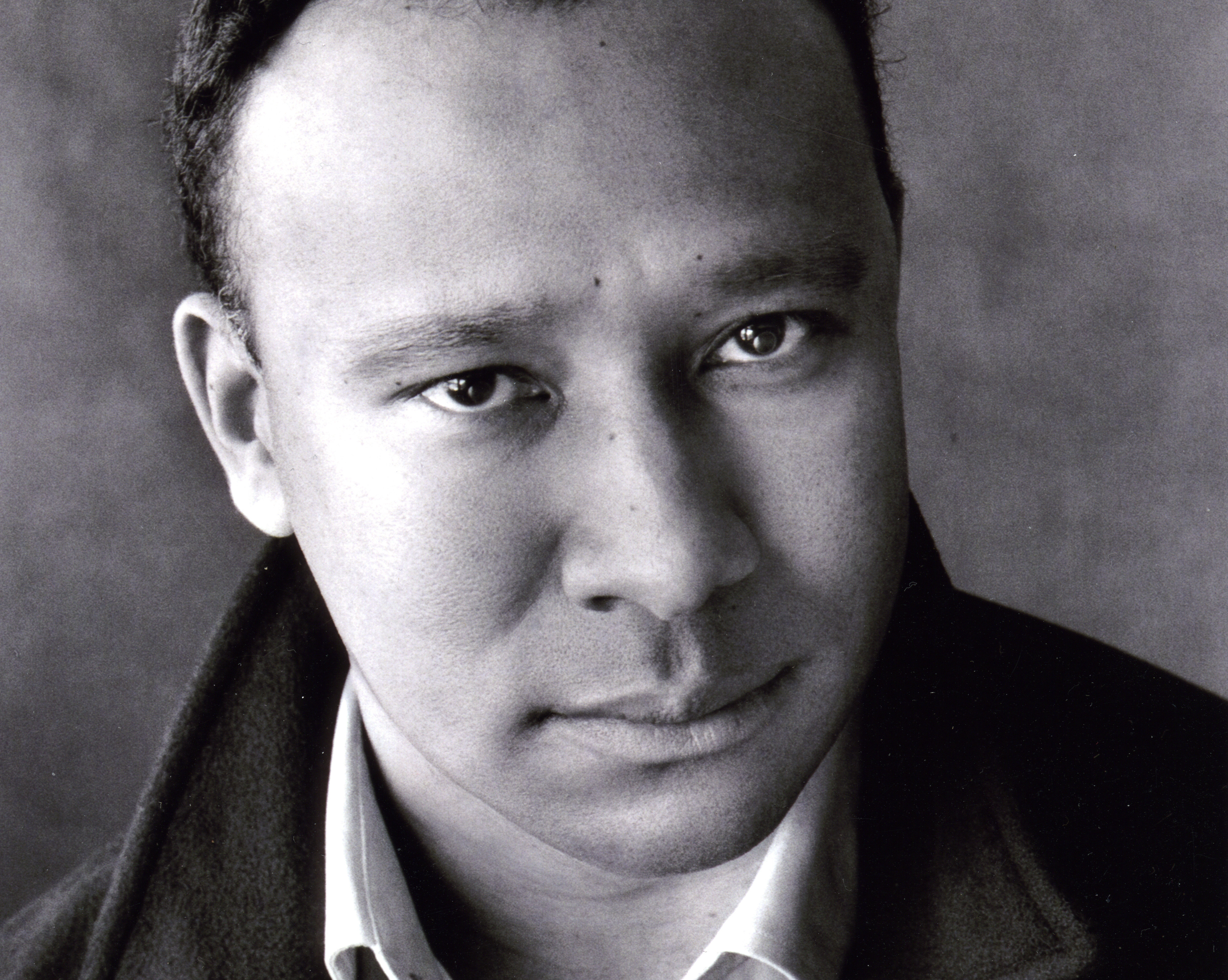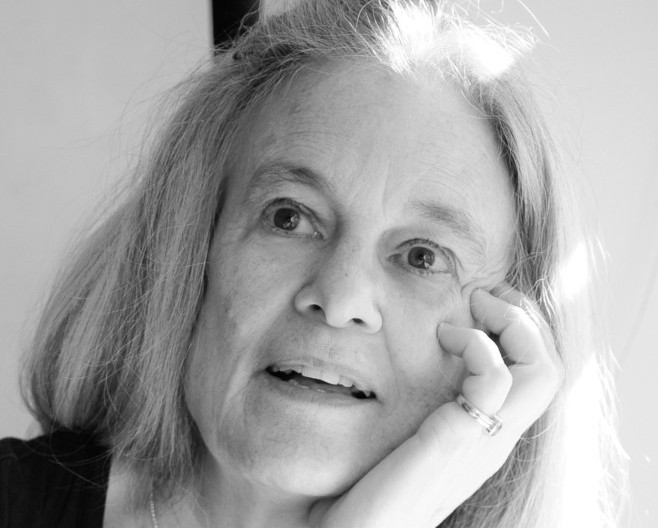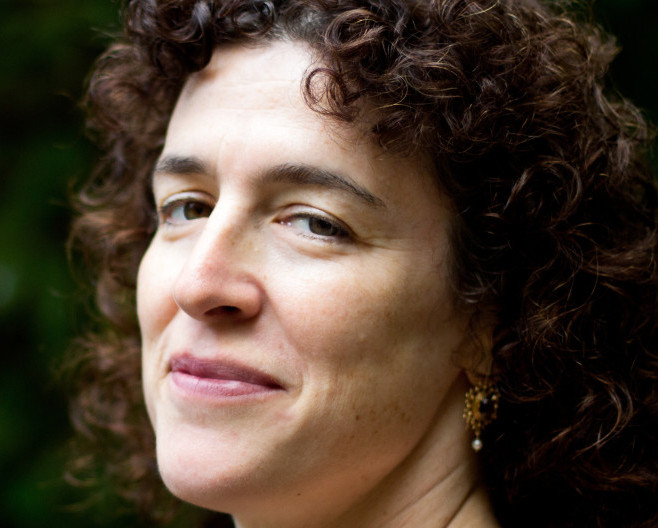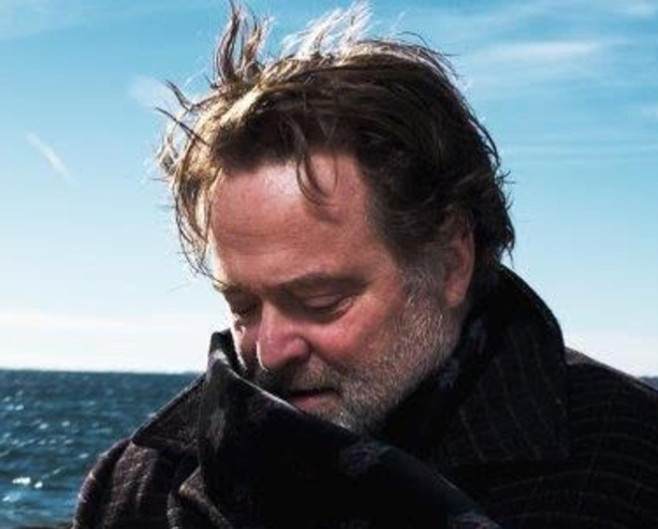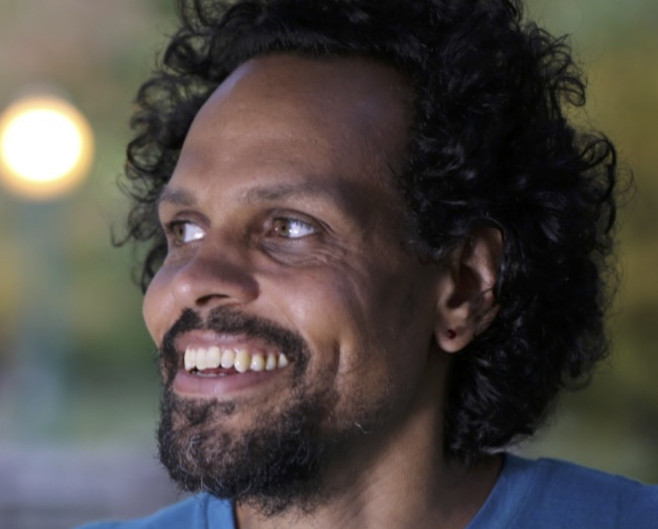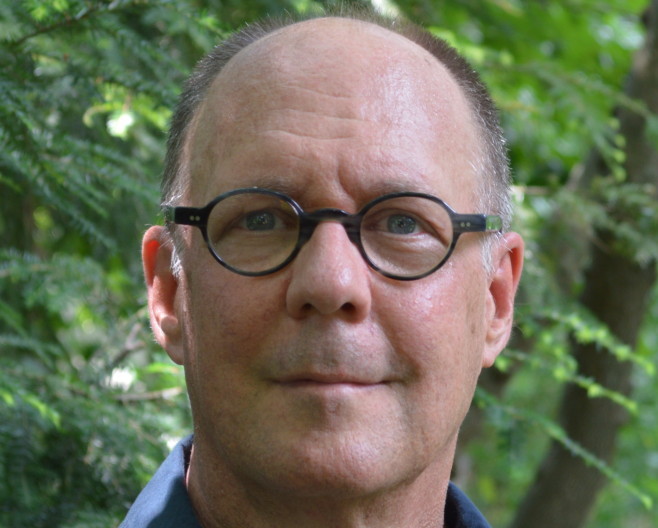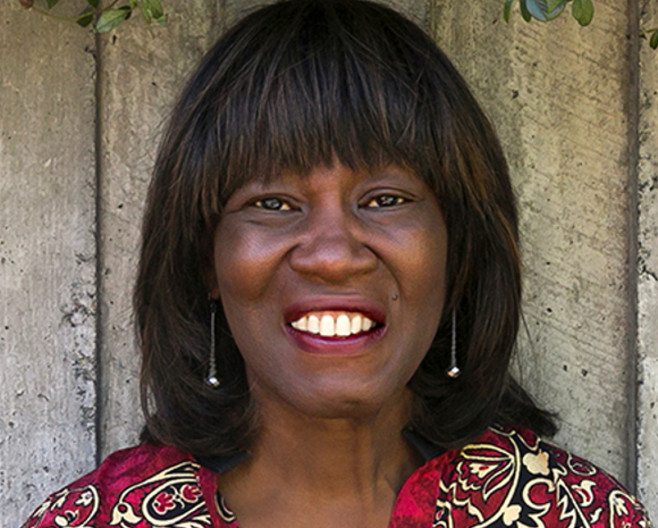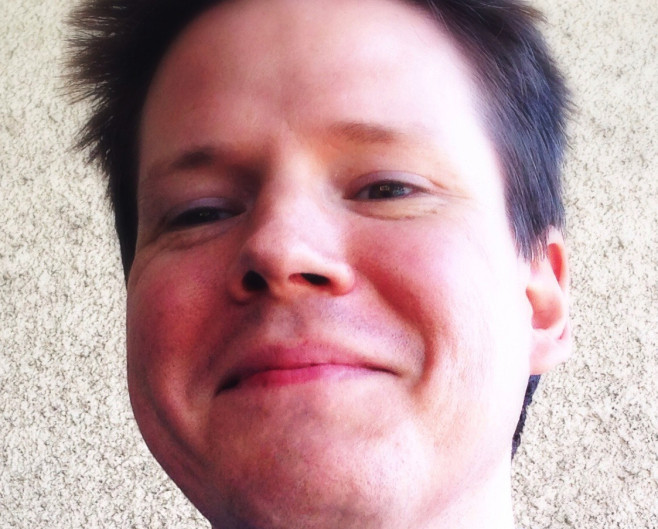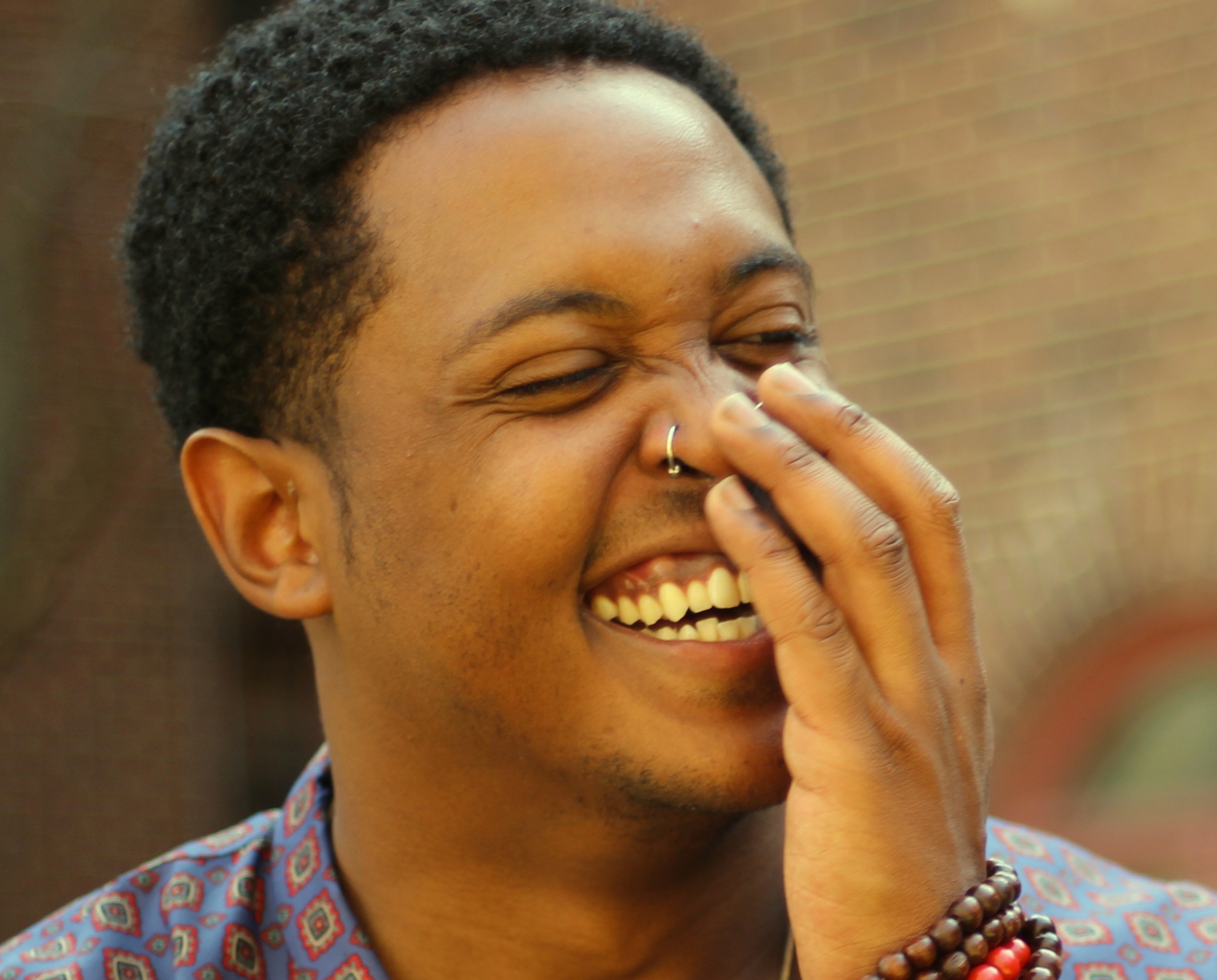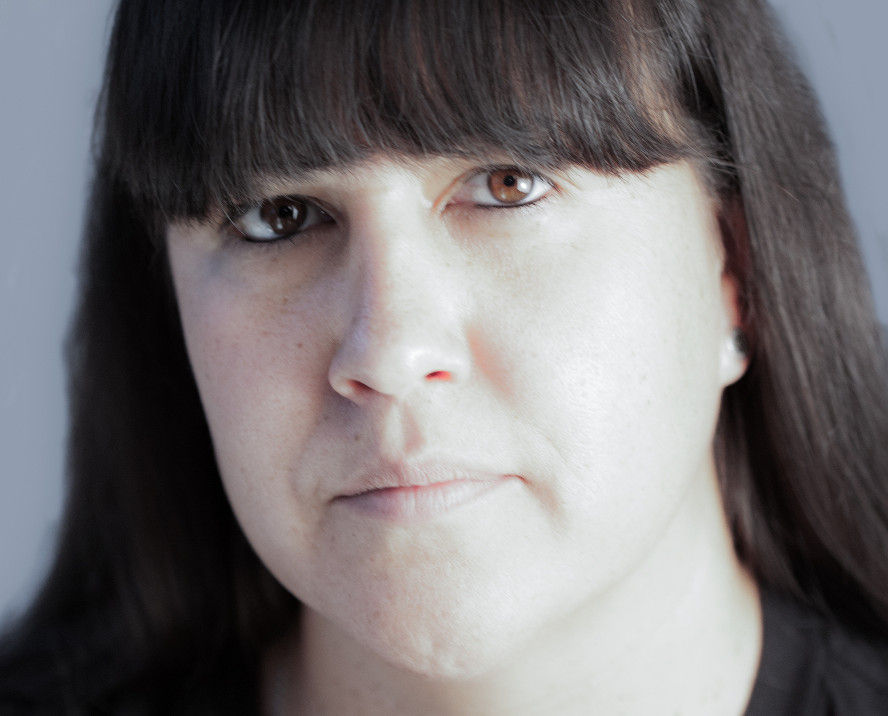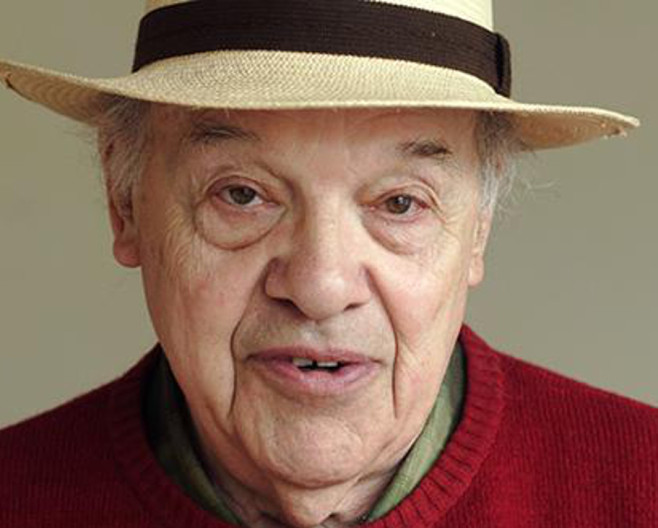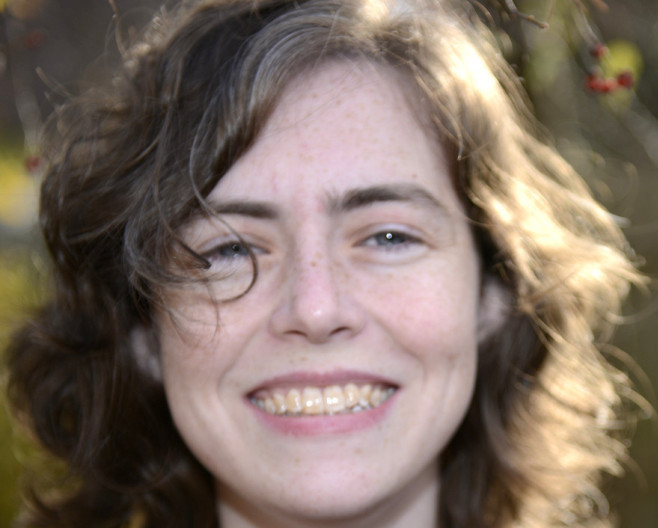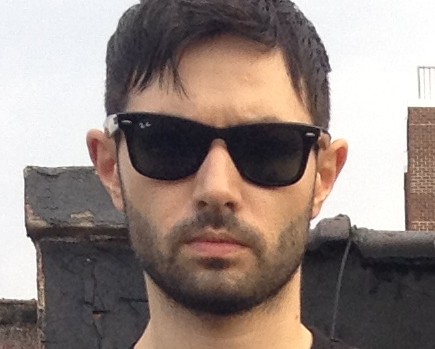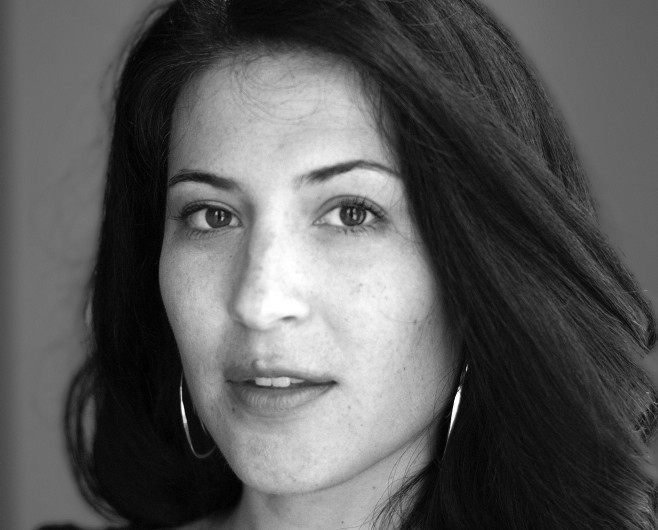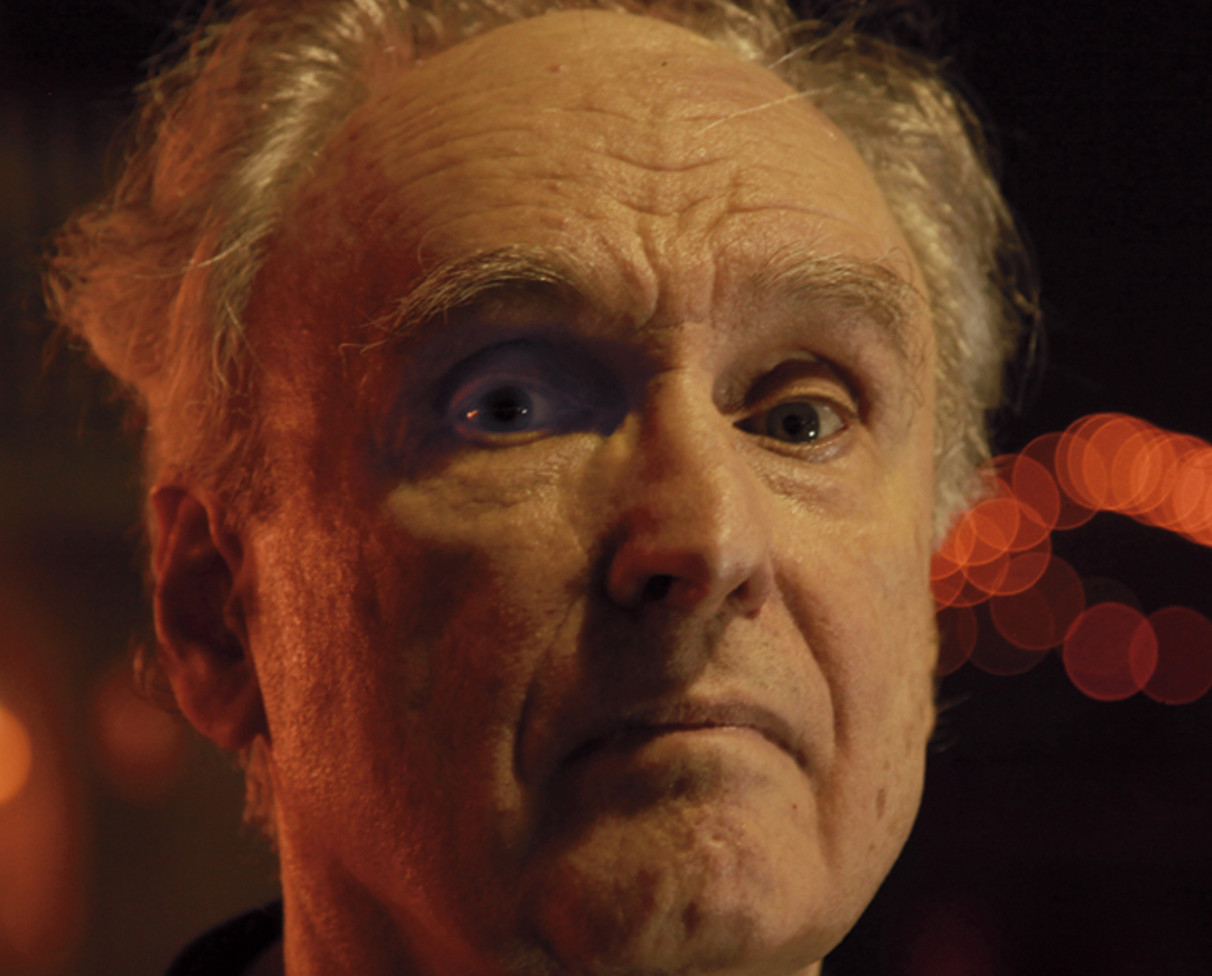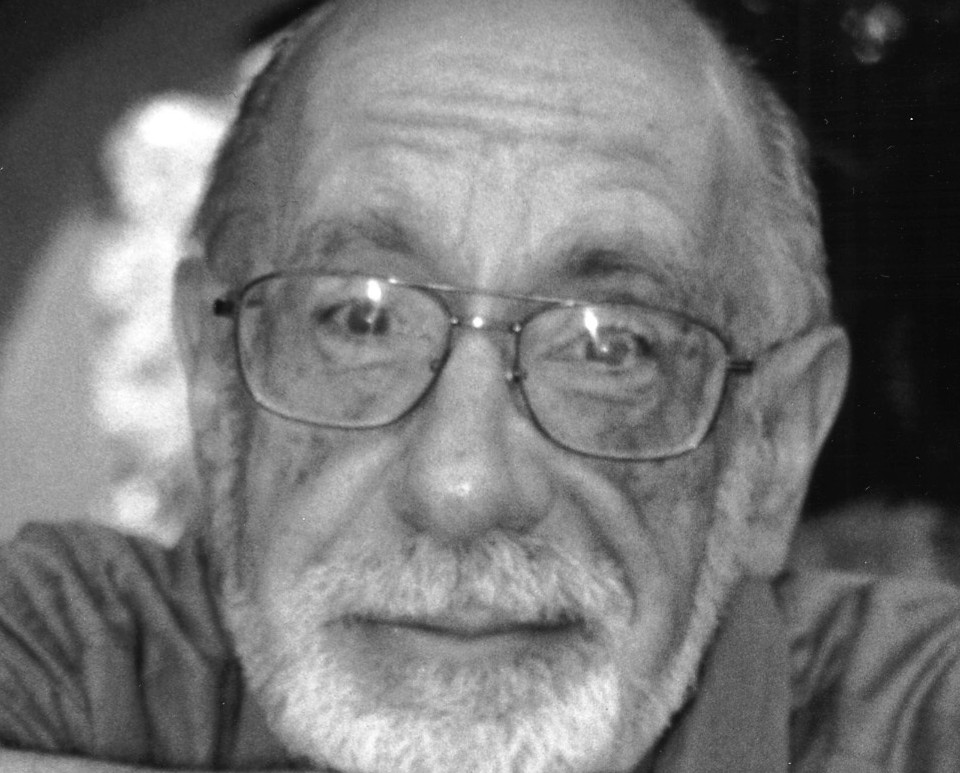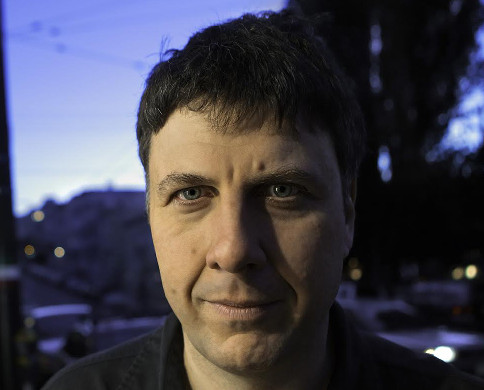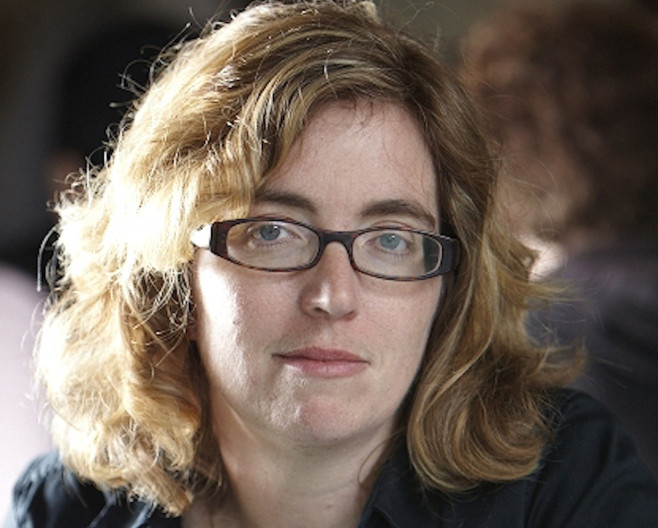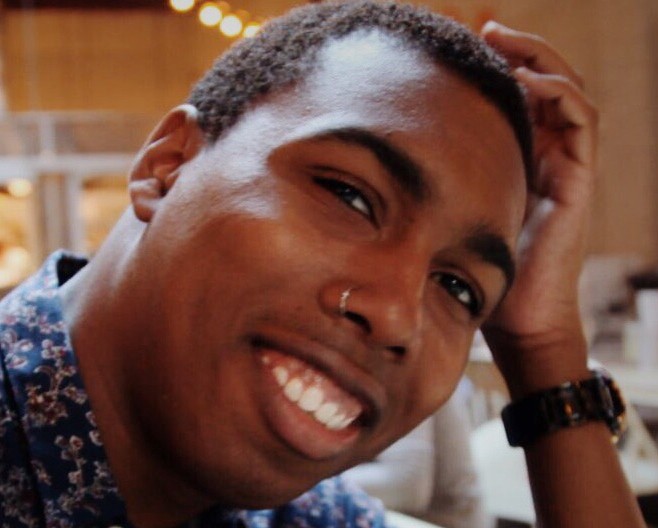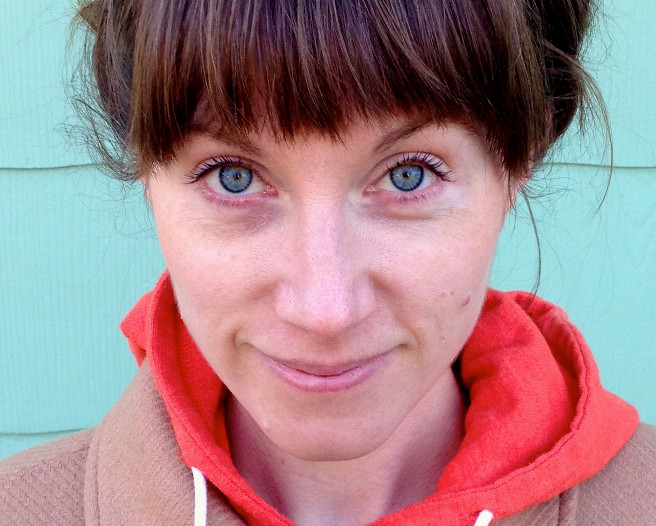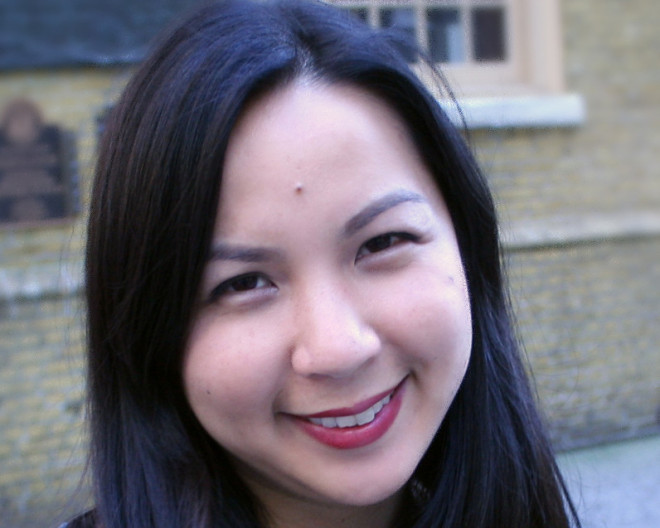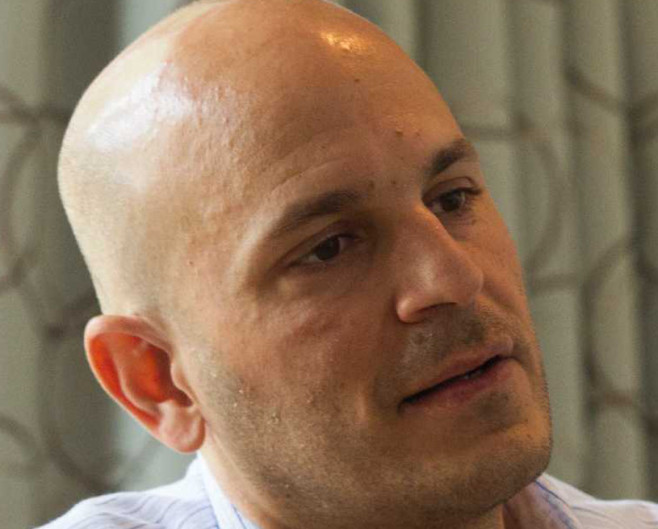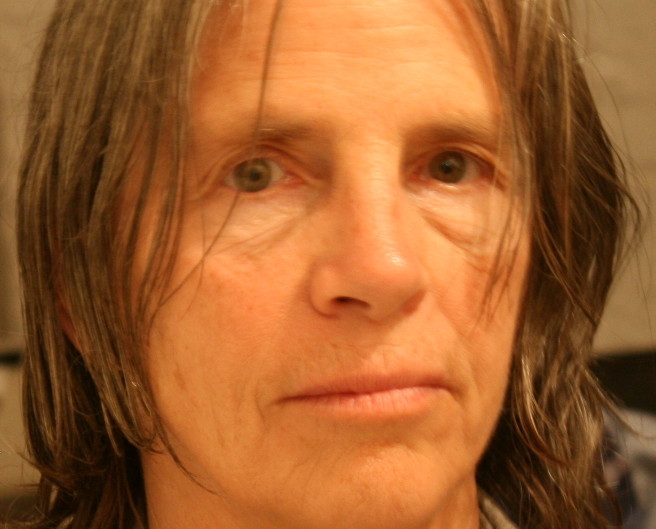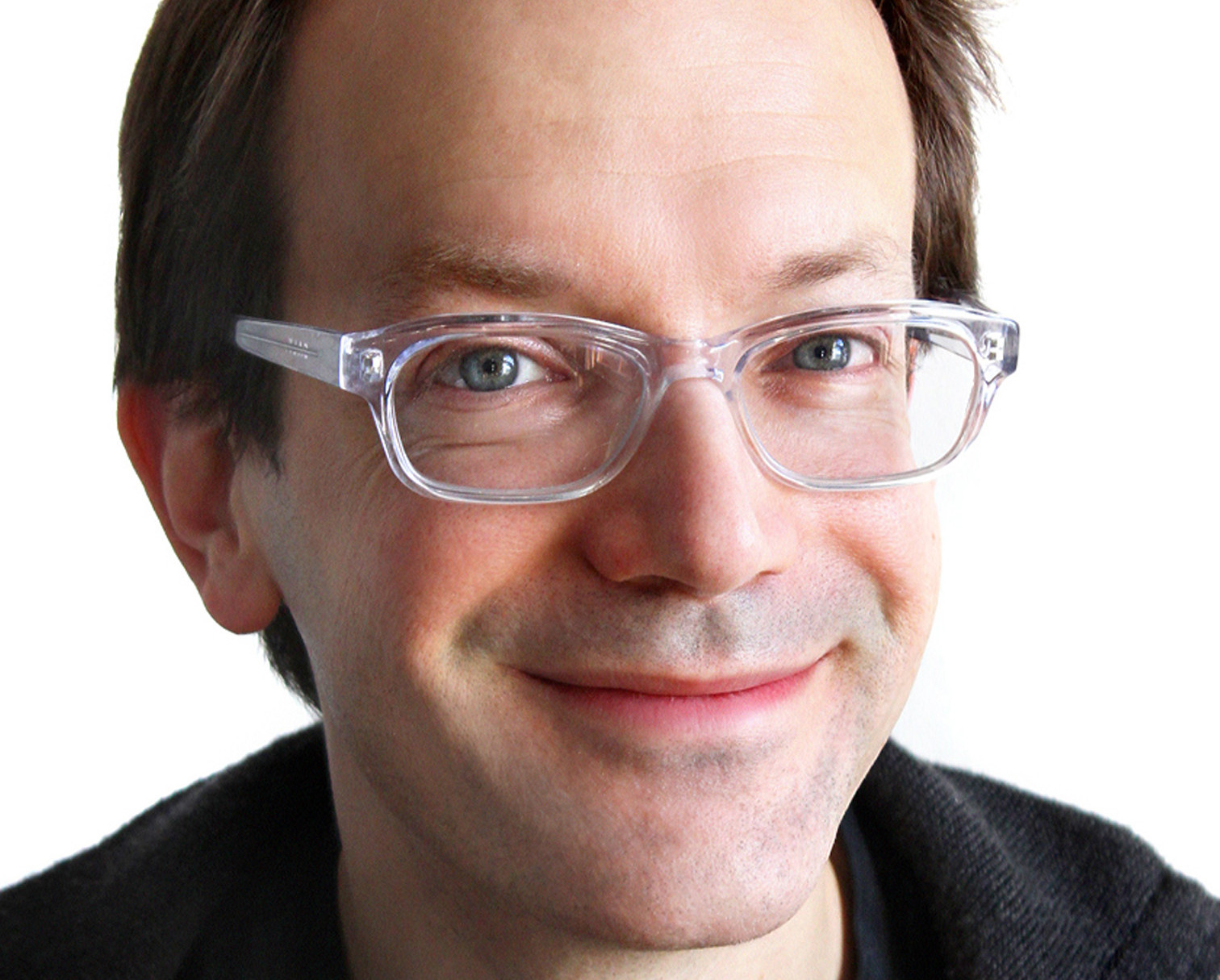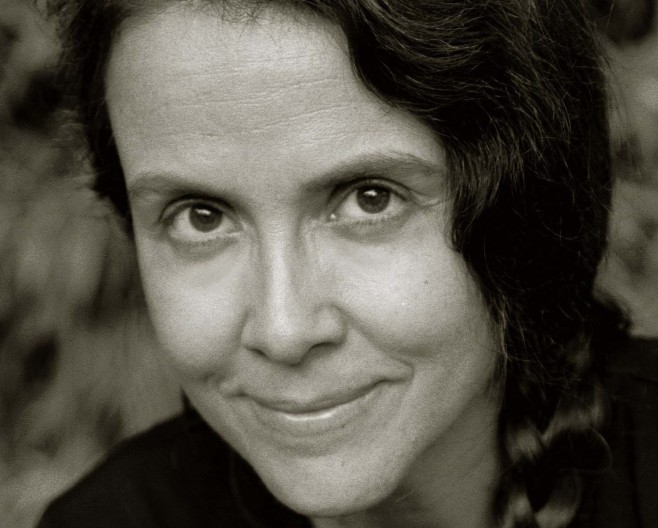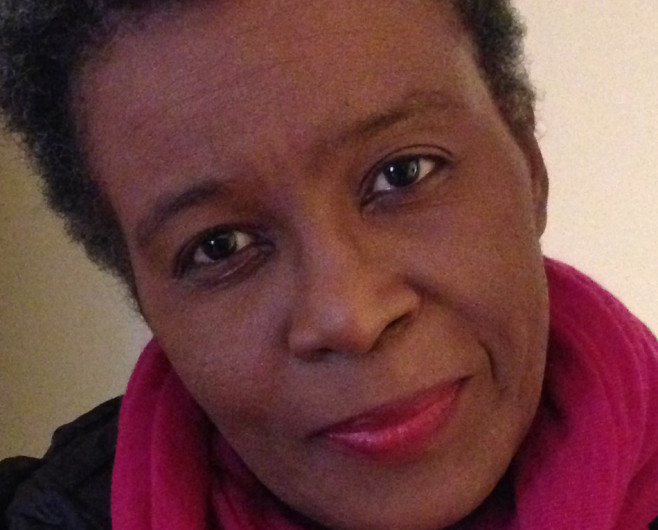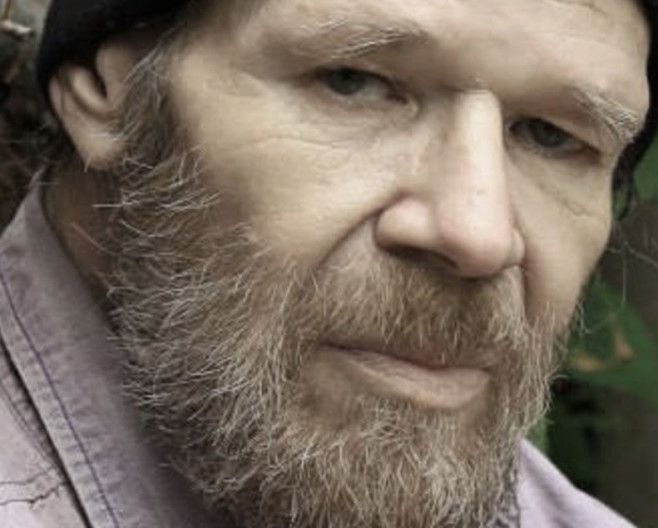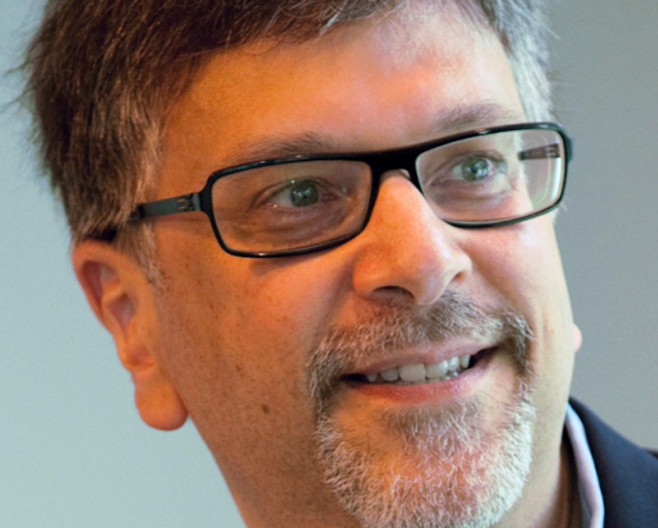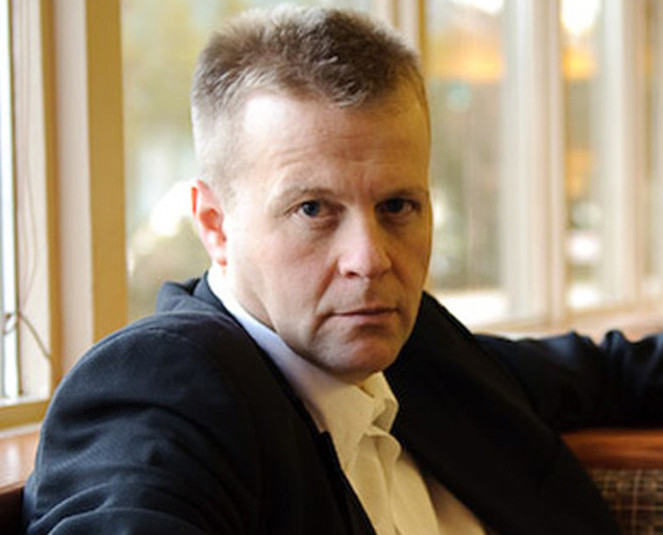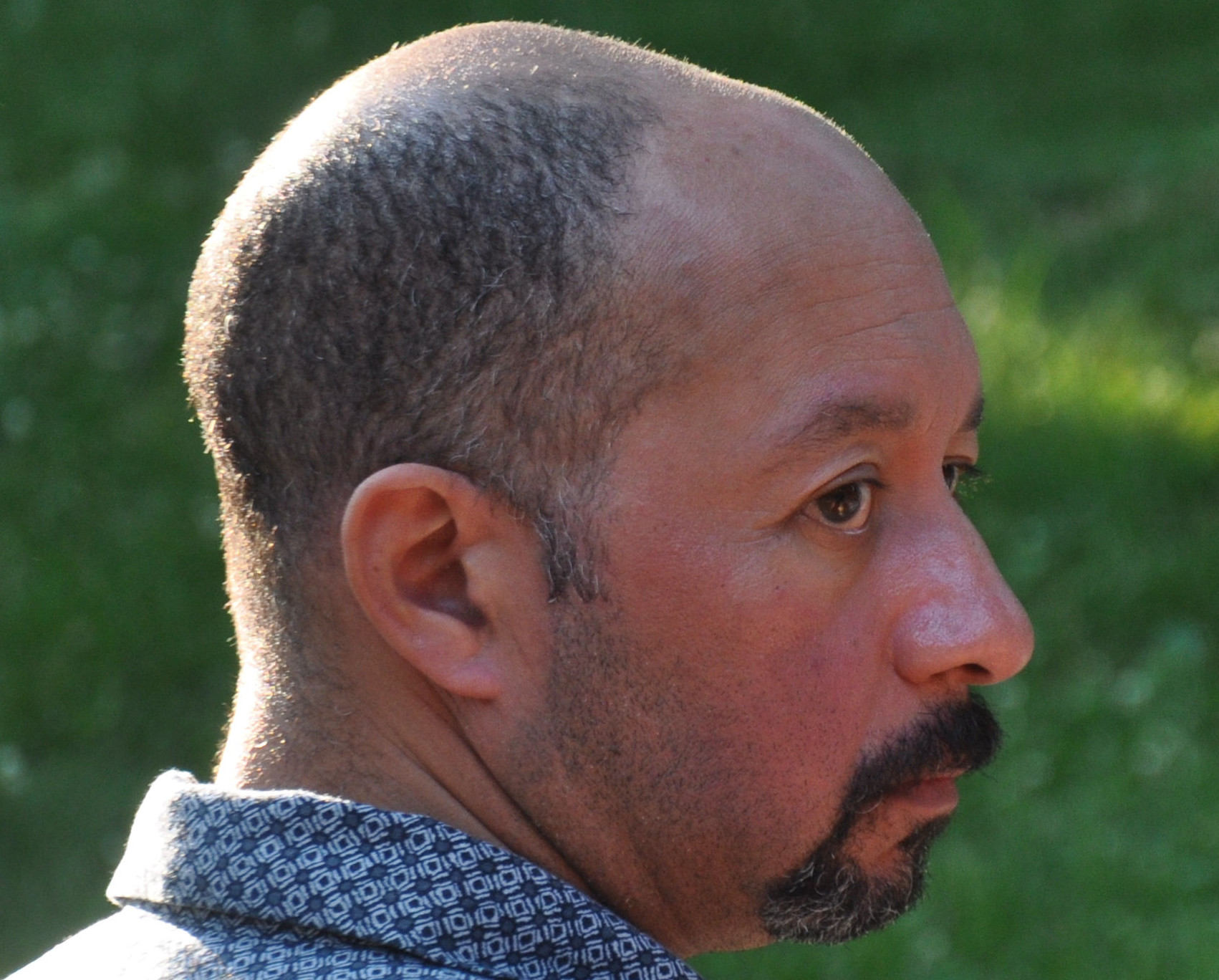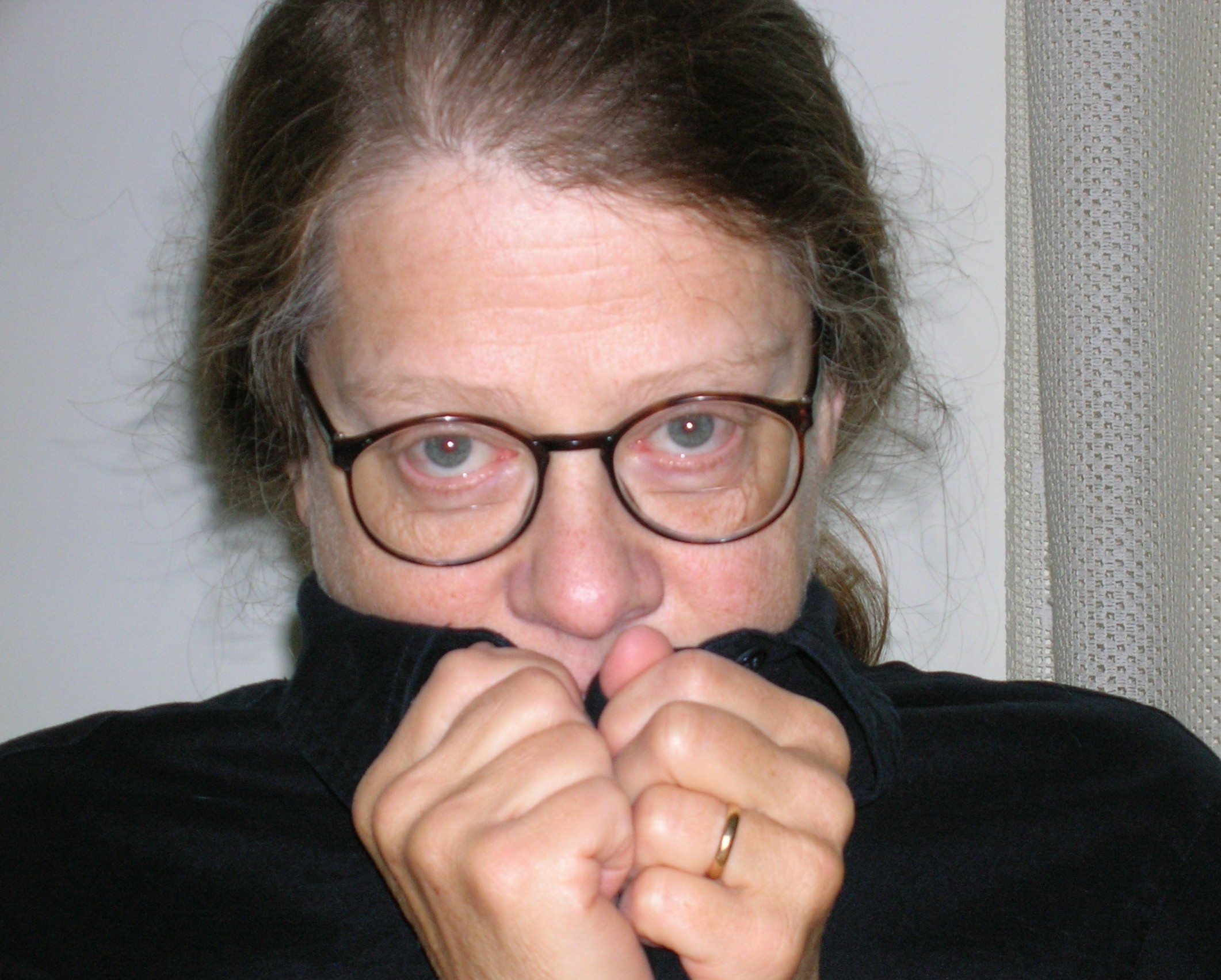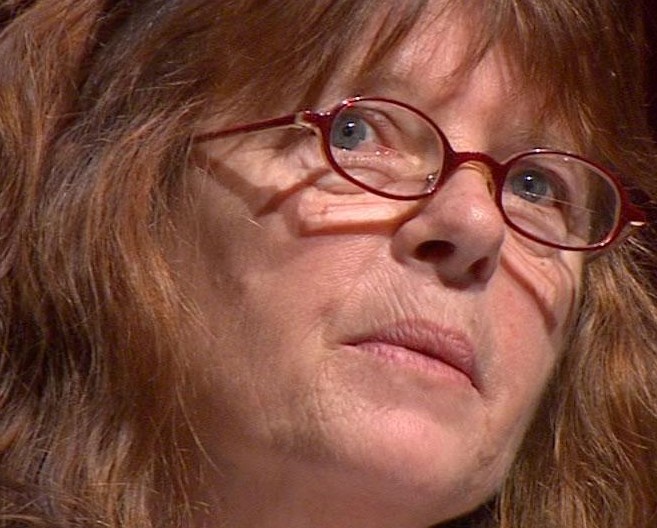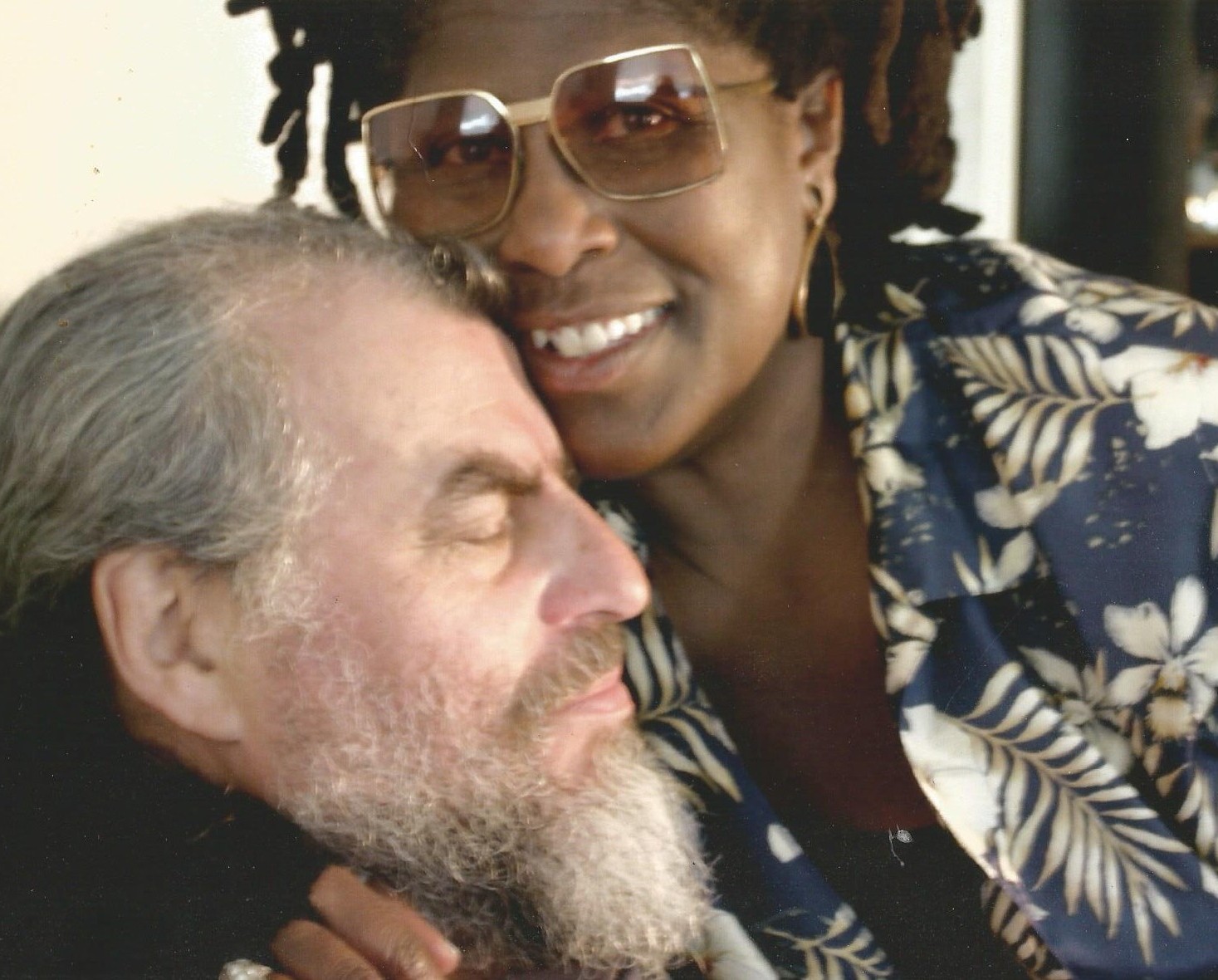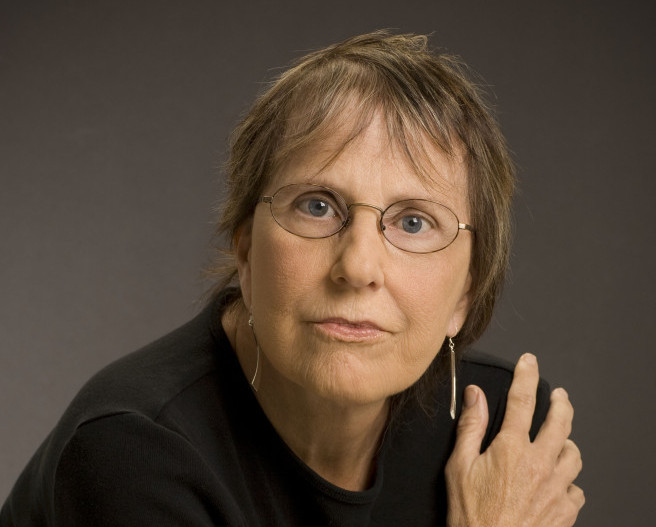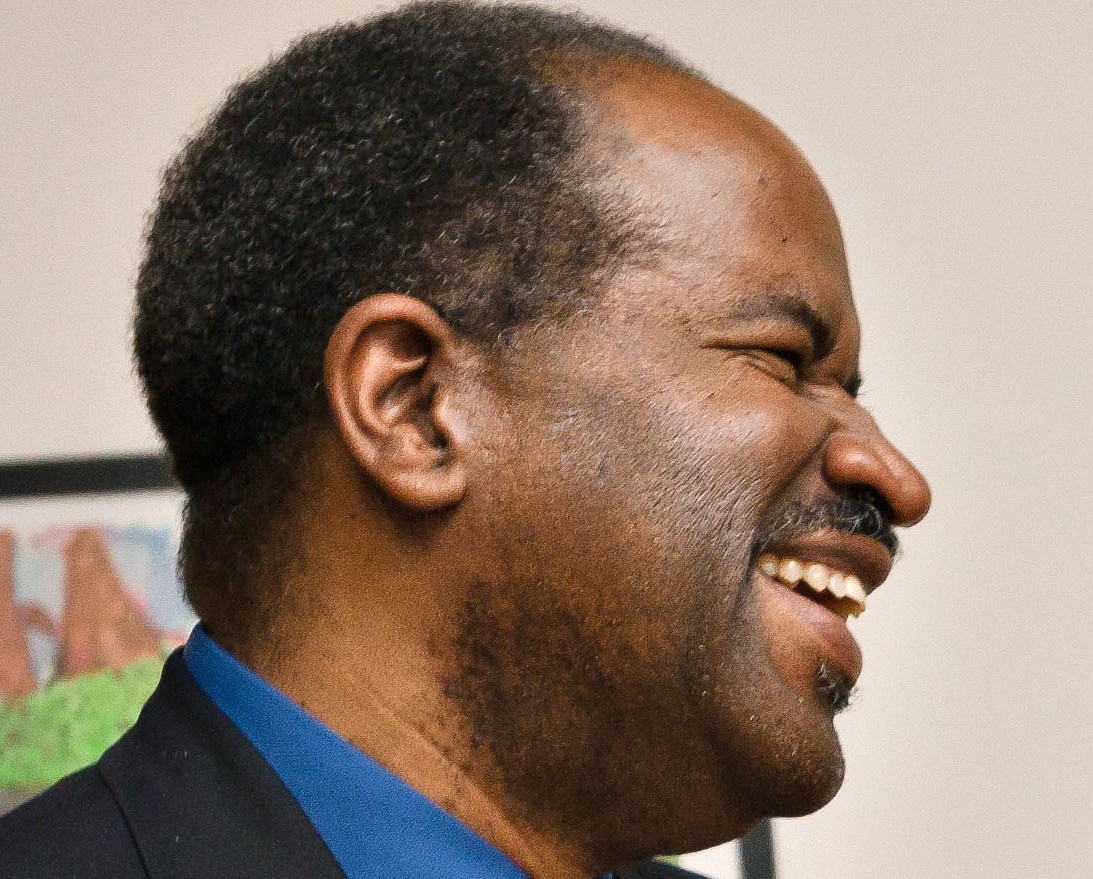“Teaching myself molecular biochemistry is just part of the process.”
CHRISTIAN BöK
Interviewed By: Kaveh Akbar
My mother was a microbiologist, my father was a geneticist. I spent my childhood in my their labs learning about those worlds, so I’m naturally fascinated by your Xenotext project. In laymen’s terms, can you quickly explain what it is for those who’re unfamiliar?
Sure. The Xenotext requires that I write a very short poem, and then through a process of encipherment, I translate this poem into a sequence of genetic nucleotides. With the assistance of a laboratory, I then set out to build this gene and then implant it into the genome of a microorganism, replacing a part of the genetic code with my text—so the organism actually becomes the living embodiment of my poem. I have written this text in such a way that when it is inserted, as a gene, into the cell, the organism can actually read the poem, interpreting the gene, as a set of instructions for building a protein—one whose string of amino acids are themselves a totally different encipherment of a totally different poem. I am trying, in effect, to engineer a bacterium so that it becomes not only an archive for storing my poem, but also a machine for generating a poem in response.
Now the punchline to this experiment is that the organism, selected to host this viral gene, is in fact an unkillable bacterium called Deinococcus radiodurans—an extremophile capable of surviving in all kinds of hostile environments. You can scorch it, freeze it, wither it—and it does not die. It can repair its own DNA so quickly that it resists mutation. It constitutes a kind of evolutionary dead-end, because it does not need to evolve. It can survive in the vacuum of outer space, and it can even survive a thousand times the dosage of gamma radiation that can instantly kill a human being. By implanting my poem into this extremophile, I am hoping to write a text that might conceivably outlast terrestrial civilization itself. I am trying to write a book that might persist on the planet, until the very moment when the sun explodes. I am, in effect, trying to write a book that lasts forever.
A book that lasts forever. The mind boggles at the scope of a project like this.
Well, I have been working on this project for fourteen years now, to the exclusion of anything else, and I am still not finished. I am still trying to get the project to work in the extremophile. I have managed to get the poem to function properly in E. coli, just to prove the concept, so that laboratories might help me with D. radiodurans.
Can you talk about getting it to work in the E. coli?
The process has taken about four years worth of work. An assay takes about six months to prepare and execute. I have to design a genetic sequence so that the resulting protein can fold viably and then persist detectibly within the cell. The process takes a lot of time, because I have got to produce an encipherment that generates a plausible fold, and I have to do simulations on a supercomputer in advance to see what the outcomes are going to look like. Once I have done these tasks, I need to commission a commercial laboratory to build the gene sequence for me. Then I get another laboratory to do the implantation into the organism and verify that the construct is working properly. If it is functioning correctly, the organism integrates my poem into its genetic sequence, and when it builds the protein in response, the poem causes the organism to fluoresce. The content of the poem even alludes to the fact that the microbe glows in the dark. (EDITOR'S NOTE: The first poem begins, "The faery is rosy / of glow...") Then I have to detect the presence of the protein in order to verify that the entire mass is there. This part of the experiment has proven to be the greatest challenge—just making sure that the organism does not metabolize the protein too quickly for us to detect the molecule. We need to be able to read the entirety of the poem in the bacterium for us to say that the experiment has worked. Each of these assays takes about six months to stage. If the experiment fails, then I have to redesign both the gene sequence and the protein sequence, resimulate the outcome, rebuild it, and then conduct the same assays in the labs. So far, I have had the construct fail five times, I think, in the course of my work—a few years worth of labor down the tubes. And, of course, I have to pay for the services, the assistants, and the materials. In many cases, we do not know why the experiment fails—I have to come up with a hypothesis that I can then subsequently test. I have managed to get the thing to work properly in E. coli; however, this particular construct does not seem to work as well in the extremophile, so I am back at the drawing board, trying to figure out how I can correct these problems, and of course, I have to raise funds, to try again.
You alluded to how the Deinococcus radiodurans is at an evolutionary dead-end, how it hasn’t really had to adapt. Is the fact it’s a sort of end-stage organism preventing your ability to modify it?
D. radiodurans is a very old organism. Some scientists have speculated (somewhat extravagantly) that, in order to acquire all of these environmental immunities, an ancestor of the organism must have spent at least part of its evolution in outer space. There are no environments on Earth that can drive the organism into this particular niche of traits. I suspect that, for this reason, the organism is difficult to engineer. It has probably developed all kinds of mechanisms for resisting this kind of artificial tampering with its genetic structure. The thing is much harder to engineer than E. coli. But not impossible. I have, so far, hit two of my three benchmarks for success. I have managed to get the gene to integrate properly into the chromosome, and the organism has fluoresced in response to the presence of this gene. But the organism is destroying much of the poetic matter, before we are able to observe the result. The cell is metabolizing the protein so quickly that we cannot detect all of it in the cell—meaning, of course, that I have not created the first unkillable writer so much as I have created the first unkillable critic.
So, when you talk about the “content” of the poem, you’re referring to an actual English version of the poem we can read. Can you talk about the enciphering process into the amino acids? There’s a finite number of amino acids and every one can’t correspond to a letter—is it phonetic, then, or how do you read that, or reassemble it?
Well, the two poems are correlated. They are in dialogue with each other. They are written according to a whole series of biochemical constraints. Because of the hellish overtones of my book, I have nicknamed the two poems “Orpheus” and “Eurydice.” The first poem is a kind of masculine assertion about the creation of life, and the second poem is a kind of feminine refutation about the woebegone absence of life. One poem is very masculine in tone, and one poem is very feminine in tone: there is a kind of orphic dimension to the whole project, because there is a lot of hellfire and brimstone in the book. The process of translation involves me arbitrarily assigning a codon of DNA to a letter of the alphabet in my first poem so that its complementary amino acid gets assigned to a letter of the alphabet in the second poem. I describe the literary constraint in the following terms:
Imagine pairing off all the letters of the alphabet so that they are correlated with each other—(if I assign A to T, then I have to assign T to A; if I assign N to H, then I have to assign H to N, etc.). There are about eight trillion different ways of enciphering the alphabet so that the letters are mutually correlated. Now pick one of these ciphers and then write a beautiful, intelligible poem in such a way that, if you swap out every letter of the poem and replace it with its complement from your cipher, you get a new poem that is still just as beautiful and still just as intelligible.
That’s insane.
This is essentially what I have done. Despite the fact that there are eight trillion possibilities, most of them are useless. Most do not generate any meaningful language. In a sense, there are eight trillion universes that I can explore, but most of them have no poetry, no life, in them. In fact, I have probably found the only available lexicon that allows me to produce two texts that are in dialogue with each other and that have any poetic merit. I think that there is only one universe out of eight trillion, able to support life, given this constraint. I have not written these poems so much as I have found them. They lurk in this cosmos of possibilities.
Incredible. You’re incorporating elements of microbiology, genetics, cosmology, linguistics, computer science, engineering. What does the process of teaching yourself to be able to do this look like? Your friend Kenneth Goldsmith has said that you’ve practically earned a PhD on your own time to be able to do this.
Yes, I guess so. I have really had to teach myself a great deal about genetic engineering in order to be able to design the experiments. The scientists do not do any of the problem-solving for me. They are happy to make something for me, and they are happy to test things for me. They can verify things for me, but as for doing the research required to design these gene sequences, test their merits, figure out whether they can produce viable proteins, troubleshoot problems—all these tasks are my responsibility. The scientists do not help at all with these commitments.
Teaching myself molecular biochemistry is just part of the artistic process. Moreover, my expertise in this scientific field is highly specific. I have not earned a PhD in biochemistry —I have simply learned the skills required for this particular exercise. I have taught myself enough material to be able to speak intelligibly with my scientific collaborators so that I can actually do the designs myself. I feel gratified in knowing that I can have conversations with these biochemists, and in turn they find me a respectable colleague. I have at least a small modicum of credibility, even when I talk with them about stuff that seems quite outlandish. I can go to them and say: “I want to put this poem in a bacterium”—and they help me!
The hardest part of this process, though, has been the writing of the two poems. This task alone has taken four years of concerted effort. I have had to teach myself computer-programming skills, so as to build the tools that can assist me with this component of the exercise. In fact, I have, at times, felt very desperate, thinking that I might not actually be able to finish the project, because the poems themselves have proven to be nearly impossible to write. I have, nevertheless, finally found something that works properly, after about four years of labor. The challenge now involves getting the microorganisms to behave, according to my protocols.
When things go wrong, the scientists often express some surprise that the experiment has not worked. And only then do they get really interested—when the exercise goes awry. I have to admit that failing repeatedly to get the construct to work in E. coli, has seemed very discouraging. And now I have exhausted all my resources. I have received the final result from my last assay on the very day when all my contracts have expired. I have only gotten two out of the three benchmarks of success. The scientists are, of course, impressed that I have even gotten this far. They have done their best to be encouraging, saying the organism has in fact built the protein, but the organism is just destroying the construct too fast for us to detect it. We have to be able to read the poem that the organism writes in response; otherwise, I am just faxing a message straight to the shredder. Right now, I am trying to figure out how I can make this protein more stable. I have to go back to the drawing board, do more research in the field, to come up with a hypothesis that I can test. Of course, I have to get more money and rebuild my team of experts (since all of them have, of course, scattered now). I am on hiatus, but I stand in sight of the finish line, and this fact is very frustrating. I’ve been working on the project for fourteen years and I still do not know yet if I can succeed. Very discouraging.
I can imagine.
I am a dedicated poet, though. I am not someone who gives up very easily. I have got options. I am still waiting to hear about some grants; I am still waiting to hear from some experts, and I am hoping that I can push this thing across the finish line.
Your last project was Eunoia—am I saying that right?
Yes, like “paranoia” but with a “you.”
So, Eunoia was a labor of something like seven years. When that came out, it seemed like an act of Herculean poetic fortitude. But, compared to the Xenotext, that seems like a quickly jotted note.
I thought Eunoia would be the hardest thing that I would ever write. I never expected that the book would be upstaged by the current madness. I thought that, if I could do something like Eunoia, surely I could do something like the Xenotext. I felt that I had permission to try, as a side-effect of earned aptitude. I wanted to do something even more ambitious than my last book.
How much of it is just that, the process of trying to stretch your limits, seeing what kinds of constraints can be overcome? I don’t even know if “overcome” is the right word because it implies the conceit would inhibit the quality of the project.
My career is all about doing the impossible thing. I pose for myself the question: what can language do, when it is pressed to the utmost limits of its capabilities? Then, I try to do something unorthodox in the hopes of making a discovery, unlocking some potential that nobody has ever really put to the test. And, you know, language in the end has never let me down, despite the fact that I have been quite discouraged while working on the two poems for The Xenotext. The poems, in fact, are not like any that I might normally produce; they are very lyrical, a little heartbreaking in tone, and they are very fragile in character. Not the typical sort of poem that I write. But, they are the only poems that exist within this cosmos of constraint. The constraint is not something that imposes itself upon the work so much as it points me toward the discovery. I am trying to learn something new.
I love the notion of “fragility” in describing these two pieces. If you’ve got eight trillion universes and you found these verses hiding in one, “fragility” seems apropos.
They are very fragile little poems. Very fragile.
What was the actual process of discovering the poems? The day you discovered them, what did that look like?
The process involved me running a piece of homespun software that generated uniquely encoded lexicons. I would input a cipher into a computer program that I built to scan the entire English lexicon, and the program would give me a list of words that I could then use for the two poems. I would then have to assess the merits of this vocabulary. I designed the ciphers so that I could generate what I hoped would be a relatively rich lexicon. The biggest vocabulary that I could produce was a little more than 780 words, but despite this large number, I found it impossible to say two meaningful sentences with this lexicon. I would then start working backwards through ciphers that had smaller lexicons. After thousands of attempts, I started to become very worried. I could not find class of words that would permit me to say two meaningful statements that could refer to each other. I got down to some very small vocabularies. I started to get very desperate, looking at vocabularies that were not much bigger than 100 words. I was lucky enough to find one that, in spite of its small size, was relatively versatile, with a rich lexicon, resilient enough for me to be able to say things that were intelligible. In fact, I was on a plane-trip to Aruba—I was about to embark on a little vacation prior to my sabbatical, and I managed to find this vocabulary while on the plane. I spent the majority of my holiday, composing these two poems. The relief that I felt after having found them was palpable. Just imagine: if you work for four years on something and still have no results, if people are expecting a book, if people are expecting a great thing, and you have not even got the first piece of the puzzle, but finally, you figure out how to get the thing to work? That was a big deal for me.
I can’t even imagine. So, big picture, with this project, if you’re hopefully able to be successful, if you’re able to get this poem into this extremophile bacteria, this is going to unhyperbolically be the most timeless bit of human artifice ever created.
I hope so. The organism is pretty robust. It is a very durable archive. I guess I am trying to be the best 21st-century poet that I can be, and this effort involves me trying to respond to the sociolotechnological circumstances of my era. I have completed the project in E. coli, and I think if I had only promised to write a poem that would be embodied in any old bacterium, with the bacterium responding, I would right now be one of the great poets of the 21st-century. But, alas, I promised too much. I promised that I would not just put the chimp in orbit, but that I would put the chimp on the moon. I think that, had I just promised to get this poem into a bacterium, like E. coli, the project would be over, and I could say “mission accomplished,” and I could start accepting my laurels. But, I am still in the throes of it. I need the project to work in the unkillable bacterium. If I pull off this feat, then yes, I think I might get to enjoy some prestige as a side-effect of the accomplishment.
My friends are, of course, trying to prepare me for failure. They think that failure is always more interesting. The failure of the ski-jumper who crashes, after flying off the ski-jump is far more interesting to an audience than it ever might be to the skier. Of course, in the world of poetry, failure is always present. We poets try to make a virtue of our failures. The idea of unalloyed success seems so foreign a concept that nobody really reaches for it. I am doing my best not to fail. To me, failure is not very interesting, especially given the kinds of vainglorious ambitions of the work. I have spent a lot of time trying to get it to work, and I have spent a lot of money. I have, so far, dumped over $120,000 CAN into these very fascinating experiments. And, of course, I am still asking for more money. I think that I am obliged to make it work, just so that I can account for my expenditure of all these resources.
As an artist, setting out with a huge statement, the way you did, that’s one way of making art. But, I think that in the scientific community, the way that it works is with more incremental, progressive achievements. You write the code, you come up with a workable sequence, you put it into the E. coli. Louis Pasteur didn’t just sit down and say, “I’m going to make a vaccine for rabies.” He sat down and decided to start studying immunology, and he came across the vaccine. (EDITOR'S NOTE: This is only kind of true.) So, in some ways, I think your motivations and ambitions as an artist and the realities of the incremental nature of scientific progress are sort of at odds with each other.
Sure, you may be right. But I think that scientists are ambitious too. They often make the claim that they are going to cure cancer: i.e. put the chimp on the moon.
Right. I guess I’m just saying, if the Xenotext project was thoroughly understood by the population at large, your putting this poem into the E. coli and having it give you a poem back might be counted among the most interesting artistic gestures of the 21st-century. I mean, I don’t know what it could be compared to. And then, the idea of putting it into an unkillable extremophile that will outlive, as you say, our terrestrial existence, that will survive maybe even our solar death. I mean, what can you point to with the same scope? Noah’s ark?
Well, the Voyager probes, the Pioneer probes, the satellites in the Clarke Belt. All those objects are testaments to our presence on the planet, as a species. I am trying to write a poem that says something heartbreaking or beautiful about the ability of poetry in the cosmos. There are not a lot of artifacts that we can point to that would be a great testament to our presence on the planet Earth, apart from the Voyager probes and the Pioneer probes. We have not built anything likely to last for more than a few million years before being destroyed and reduced to geological dust.
The only things that we do transmit into the future, over epochal time are threefold: the background radiation from our nuclear waste is going to persist for millions of years; the fossil record is going to preserve a testament to the mass extinctions cause by us over millions of years; and the geological evidence of climate change is going to be preserved in the environment for millions of years.
Those are three really poor testaments to our presence on the planet.
Right. I think that it would be great if there were at least one poem in such a list.
Yeah! I’m at a loss for words to describe, if you were to be successful, how important it would be to us as a species, to our ability to demonstrate any lasting capacity for aesthetics.
We know of no form of information-transmission that can actually last for billions of years, except, of course, for living things. The information in your own genetic sequence contains some sequences that are so crucial to all living things that they have never evolved out of any organism, and these sequences testify to the durability of such information over geological time. There is no form of information-transmission that is more enduring than the information in life-forms themselves. I am merely reacting to this trend—even though scientists are already imagining how to genetically engineer sequences of organisms as a means of storing data, perhaps even against the threat of planetary disaster, like a meteoric impact or a nuclear conflict. How might we be able to reconstitute our culture? Some scientists have speculated that we might have to build repositories of living things that can survive such disasters. It is a very elegant sci-fi idea, and I can imagine trying to use living things as a means of communication across interstellar distances. You could put messages into spores and send them out into the void. They would survive and persist, adapting to the environment in which they find themselves, reproducing while sitting and waiting for a civilization smart enough with fast enough computers and bright enough cryptographers to decipher them. Who knows? There could already be such things in our own environment—we may be looking for evidence of alien civilizations in the wrong places; perhaps there are already messages enciphered in living things on the planet Earth, each cell of which preserves a message from outer space.
Like those scientists that had that extravagant idea you alluded to earlier about this very bacteria potentially having had some part of its evolutionary history spent in outer space.
Yeah, believe it or not, the scientists have actually looked, they’ve made an effort to look into organisms to find messages from outer space. In the 1970’s, there were a handful of articles published by scientists about that very thing. Quite an amazing gesture. Nobody’s ever really put the premise to the test. It’d be a very interesting hypothesis for some young graduate student. How would you know if there was a message from outer space enciphered into a genome? What kinds of cues might you look for? You’d have to do a survey of all species on the planet to find if there’s any of that evidence there. It would be a very cool dissertation.
Interview Posted: October 13, 2014
MORE FROM DIVEDAPPER. (Drag left)









